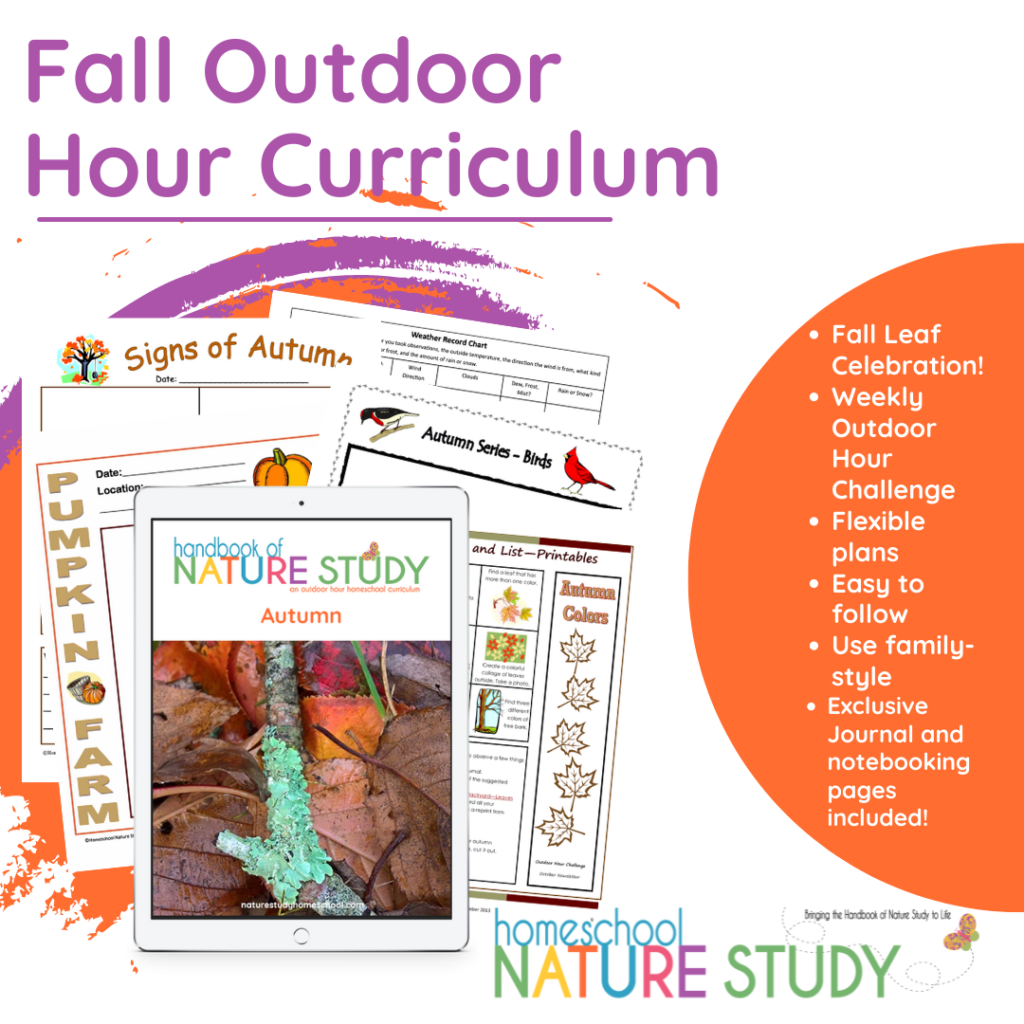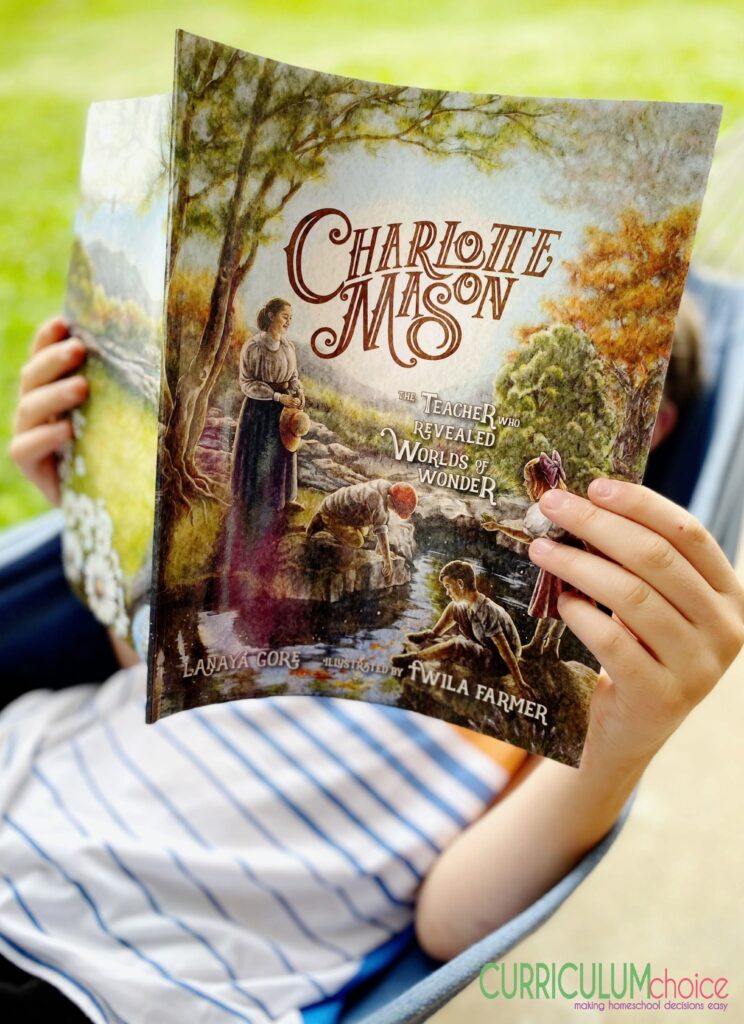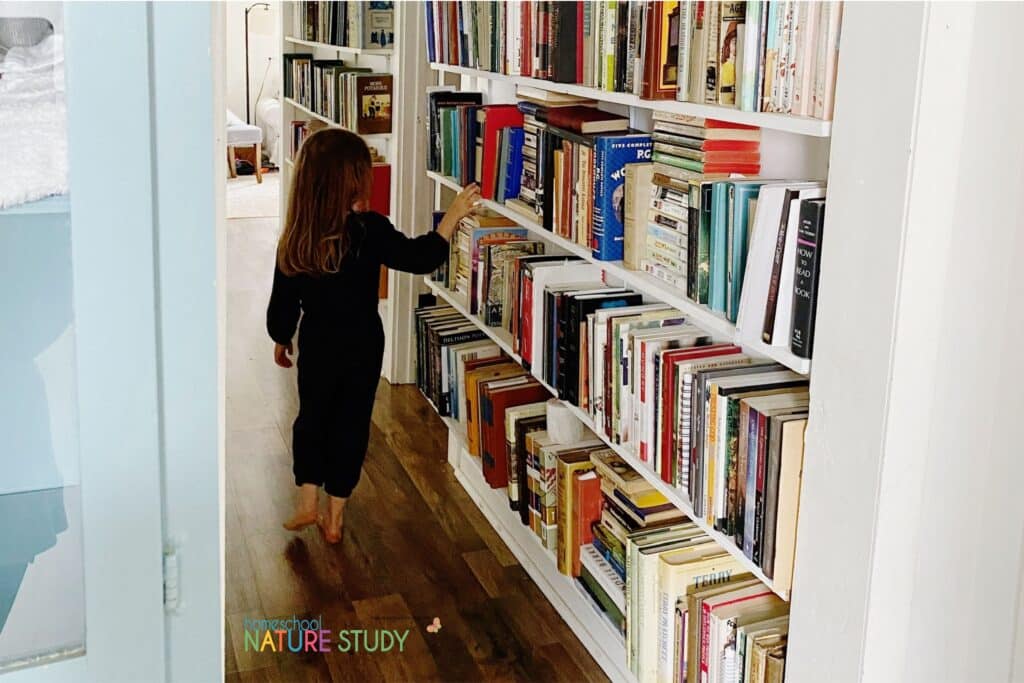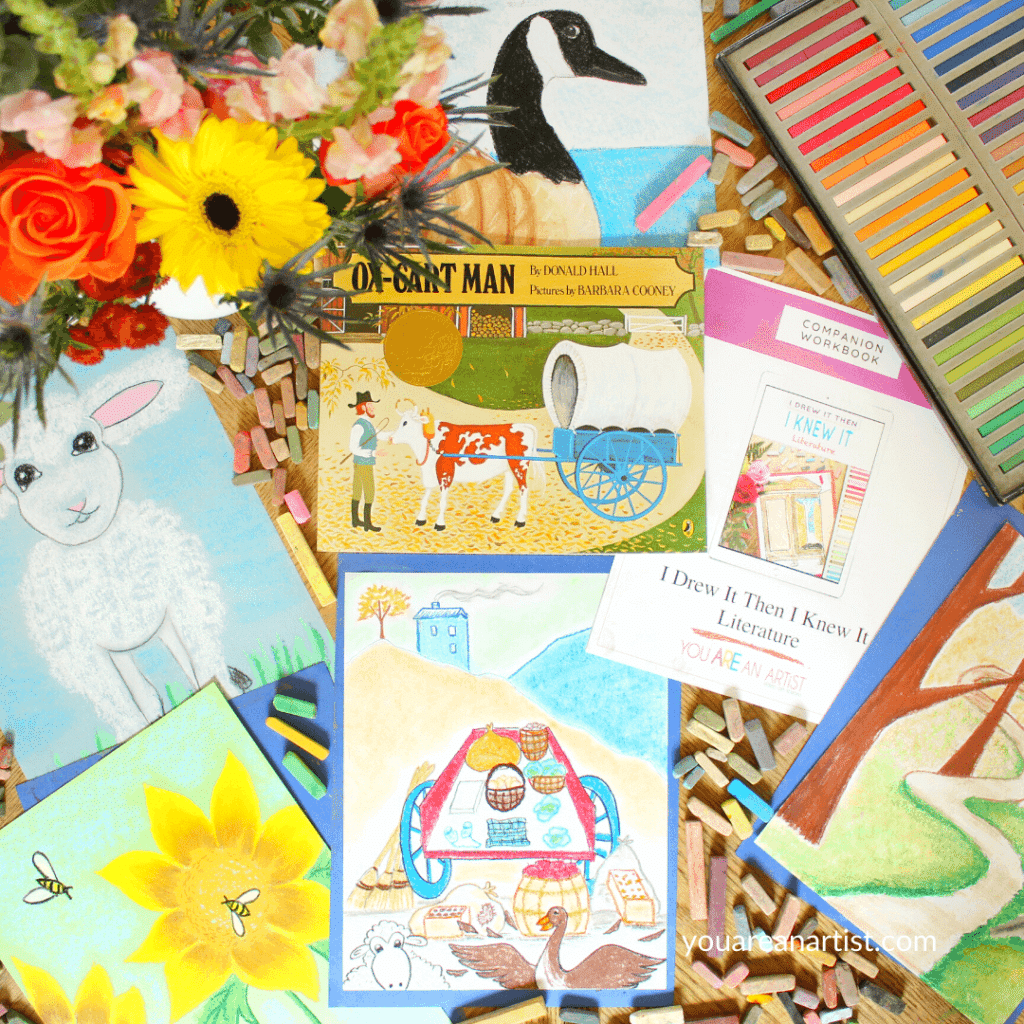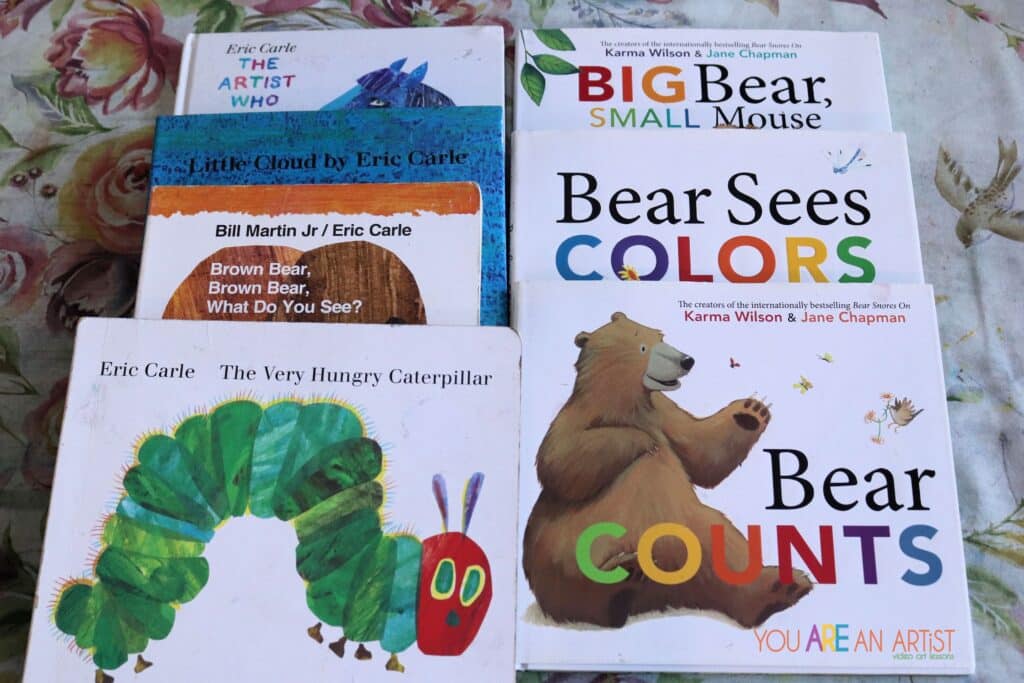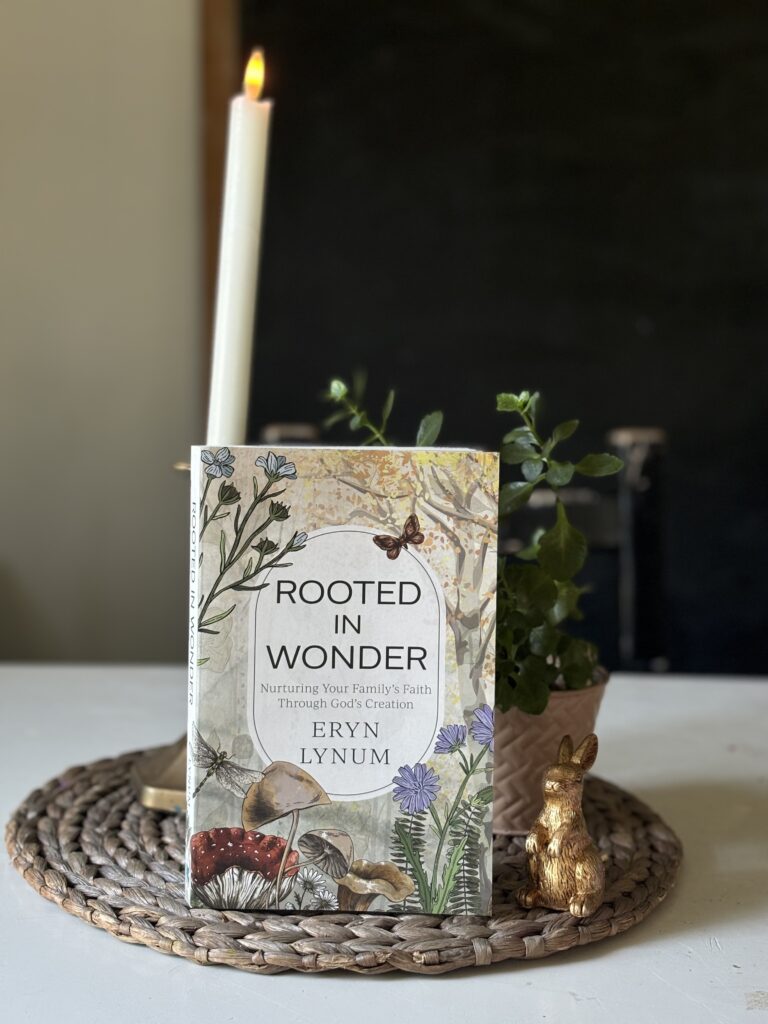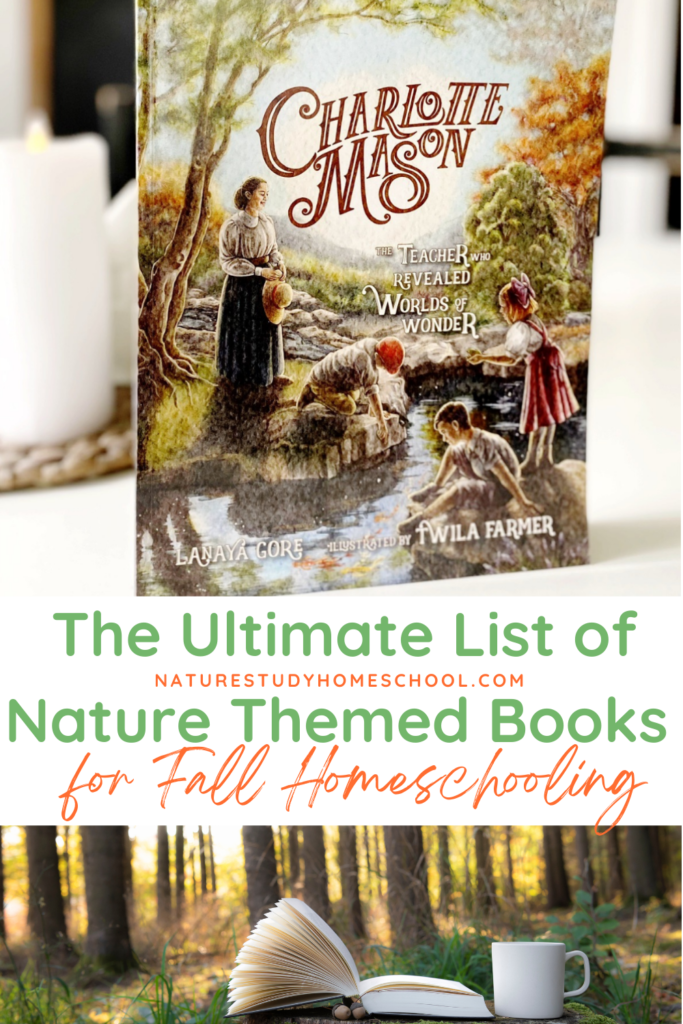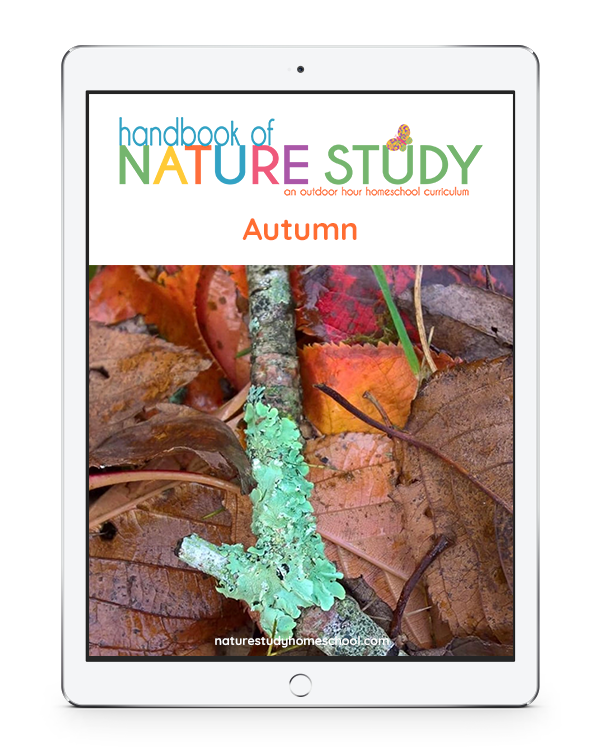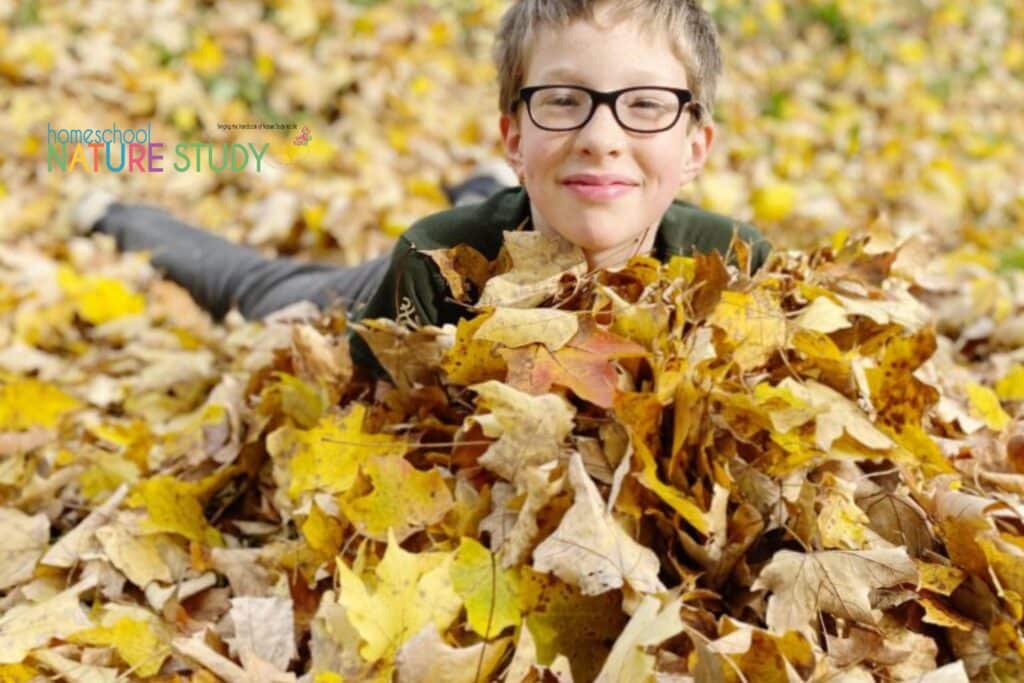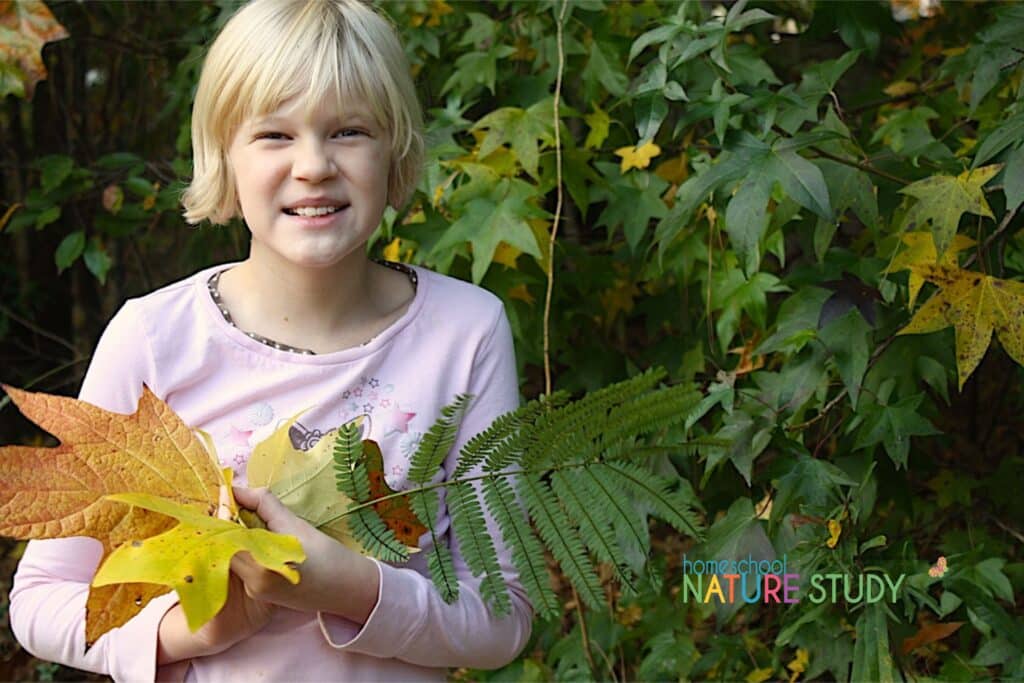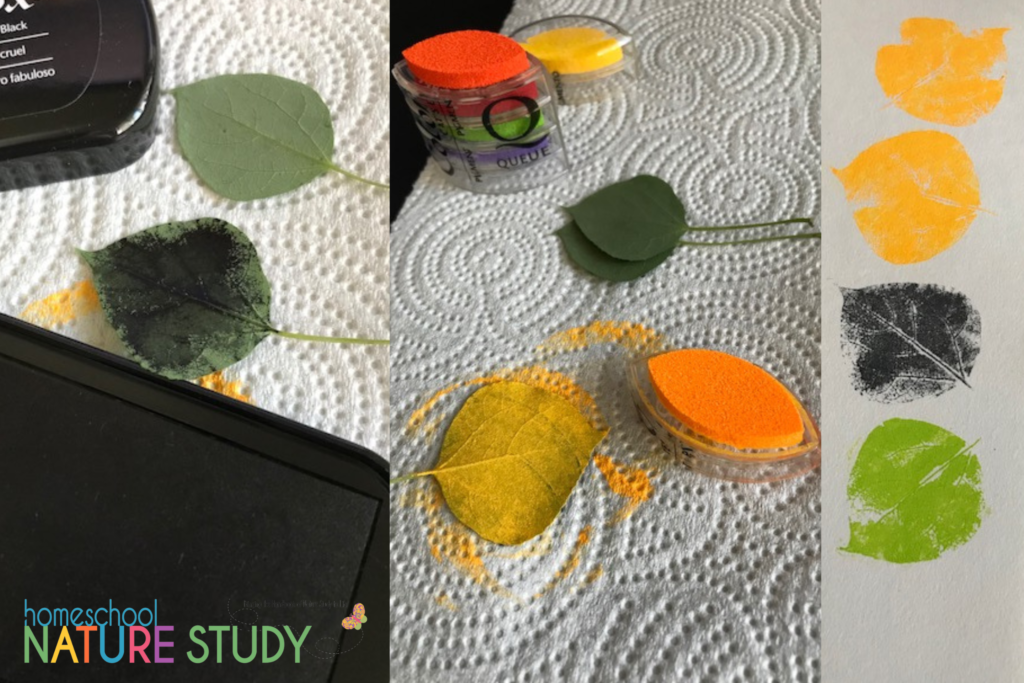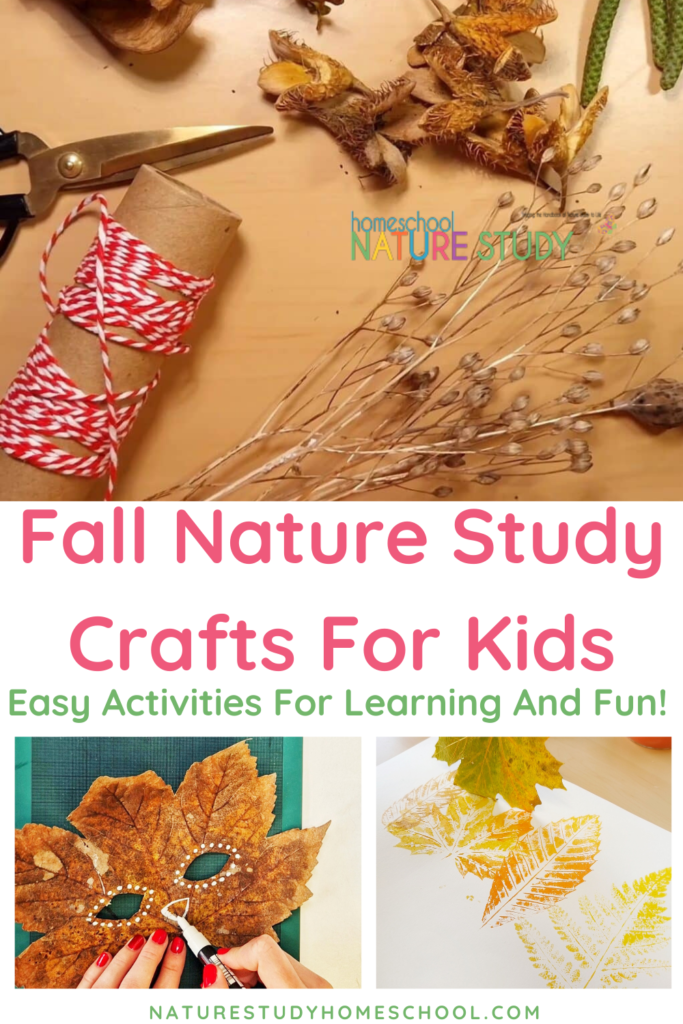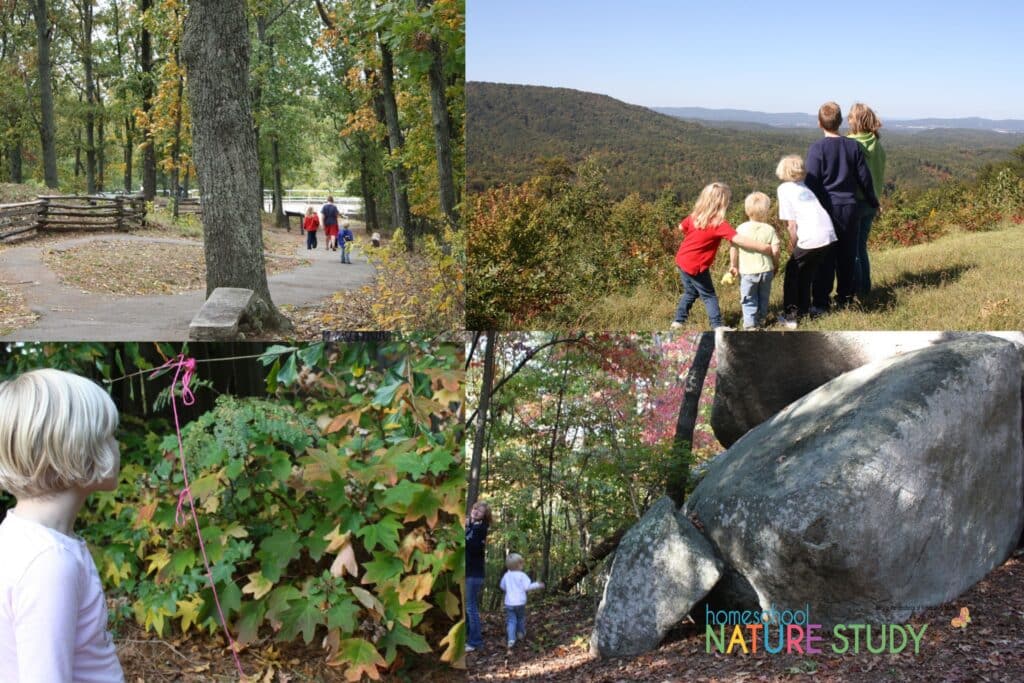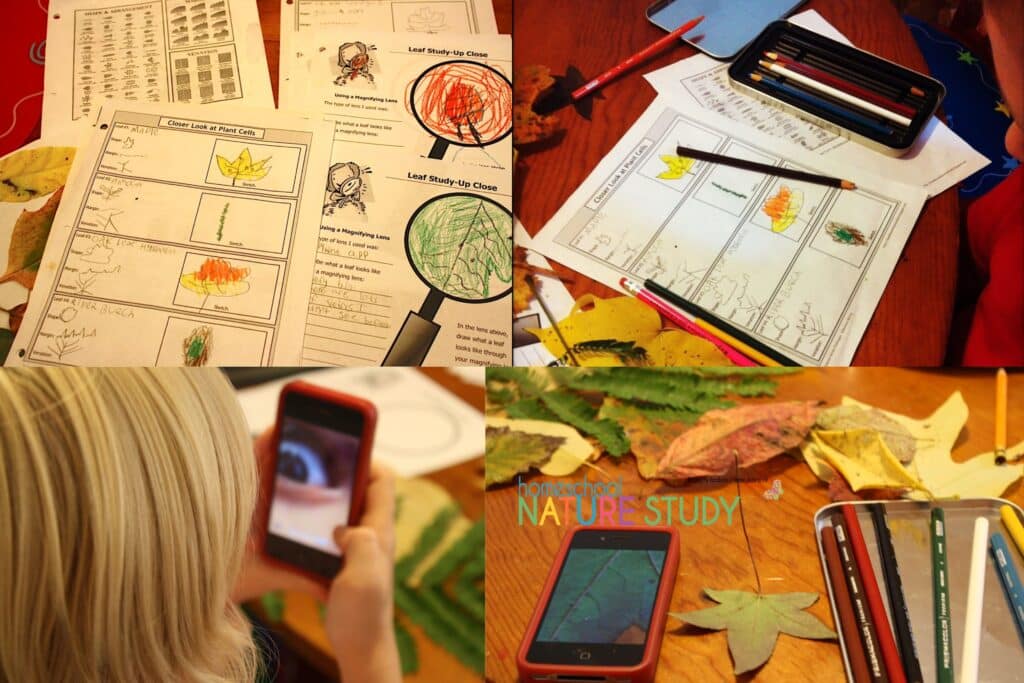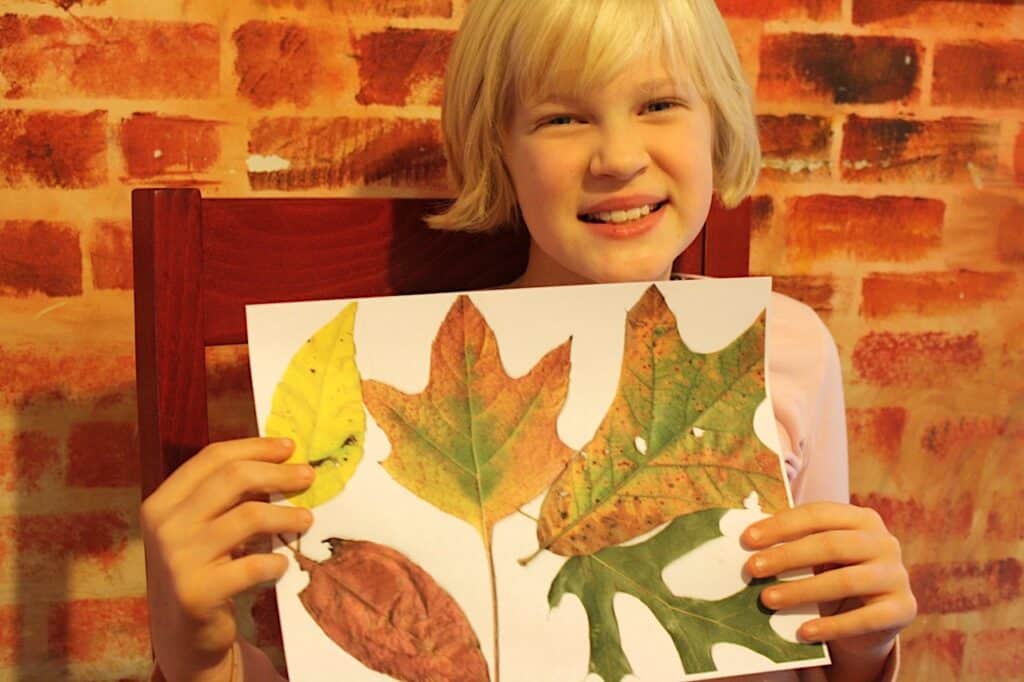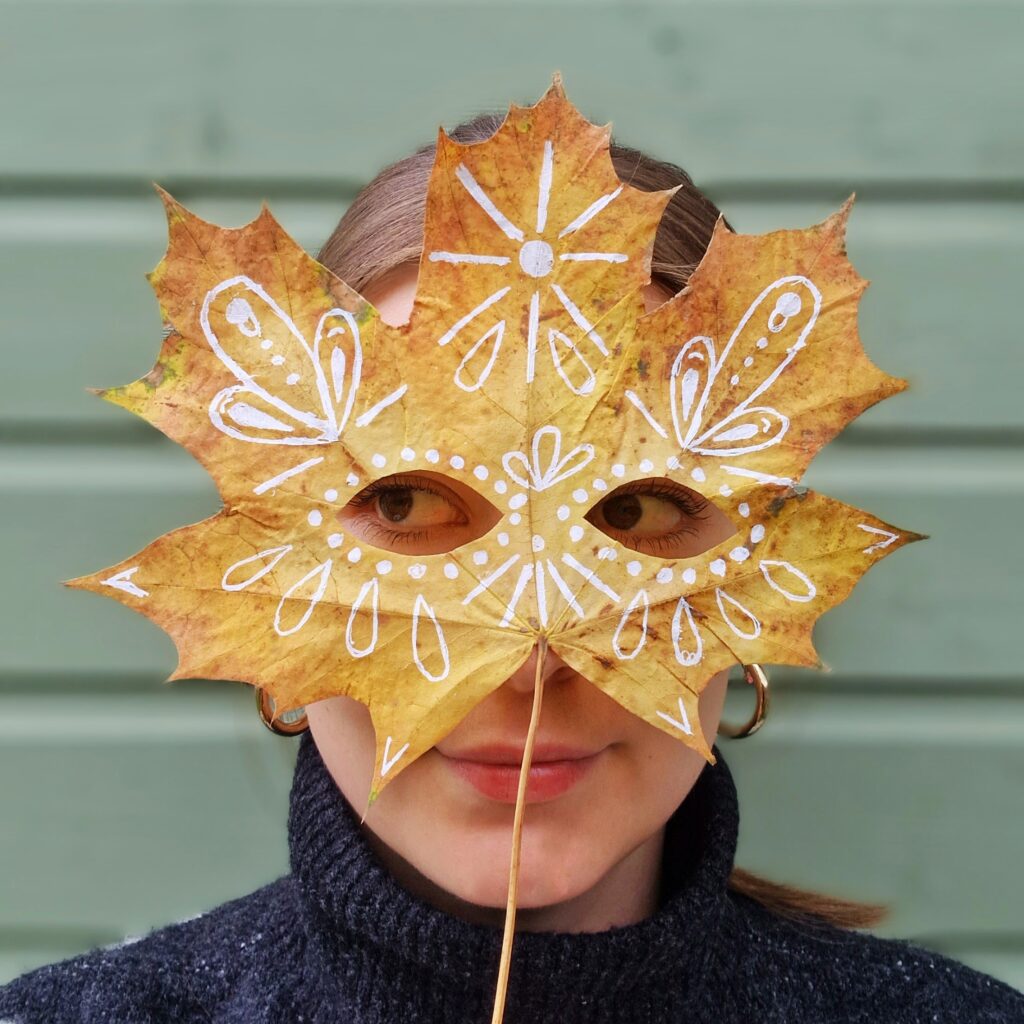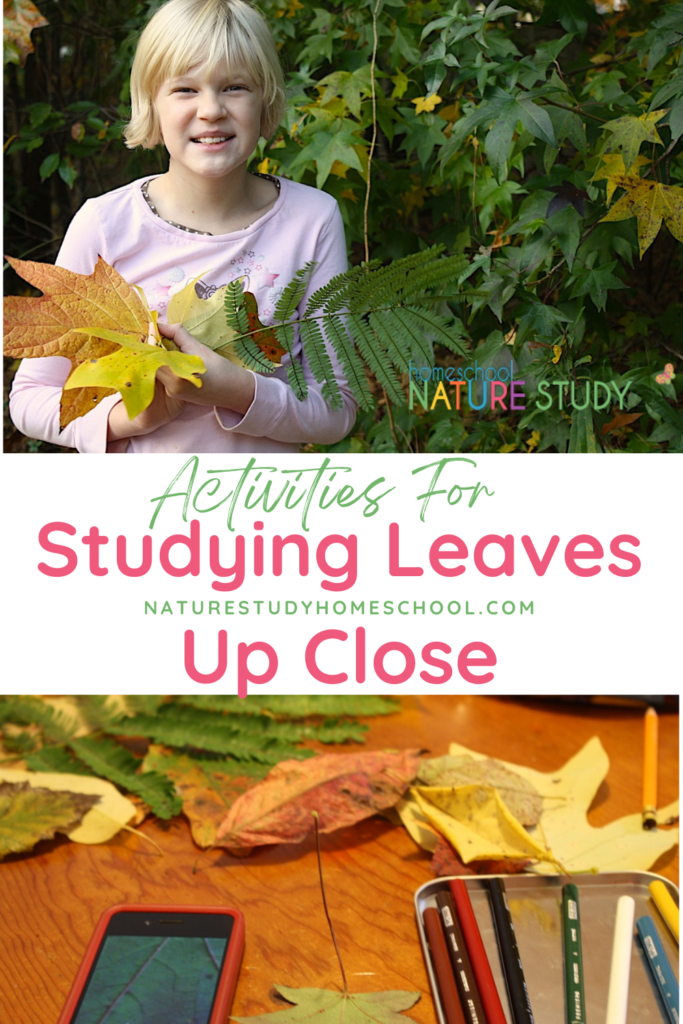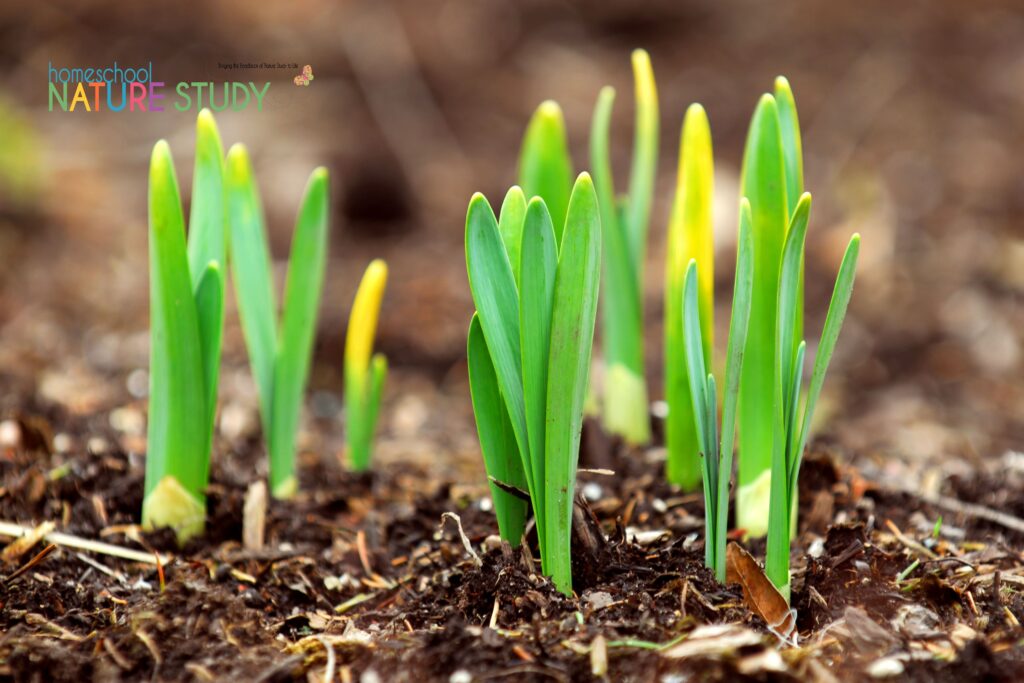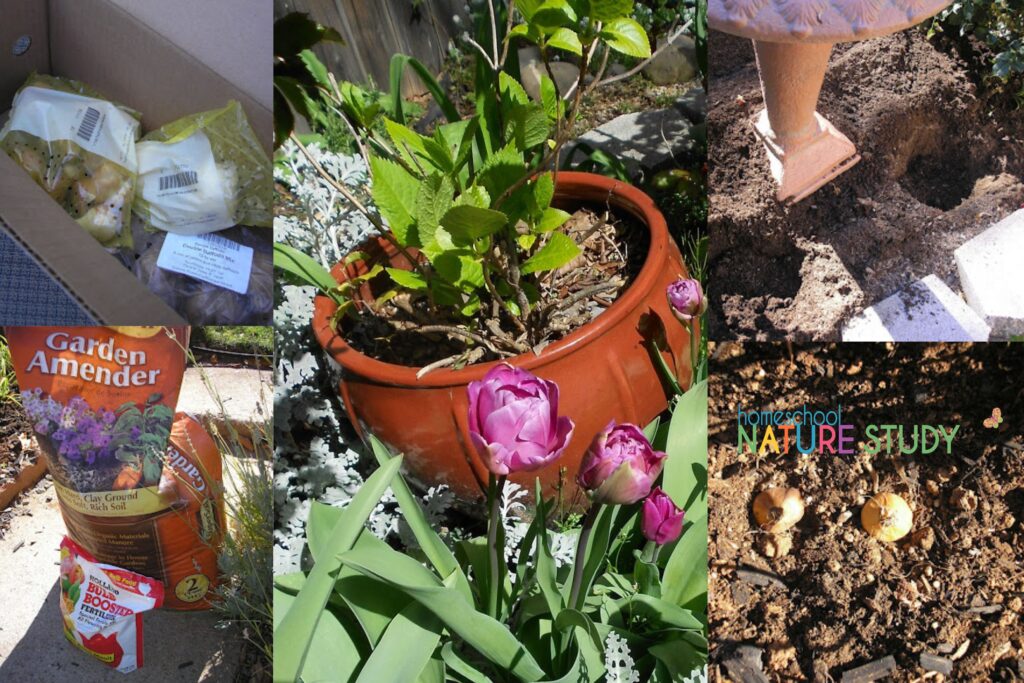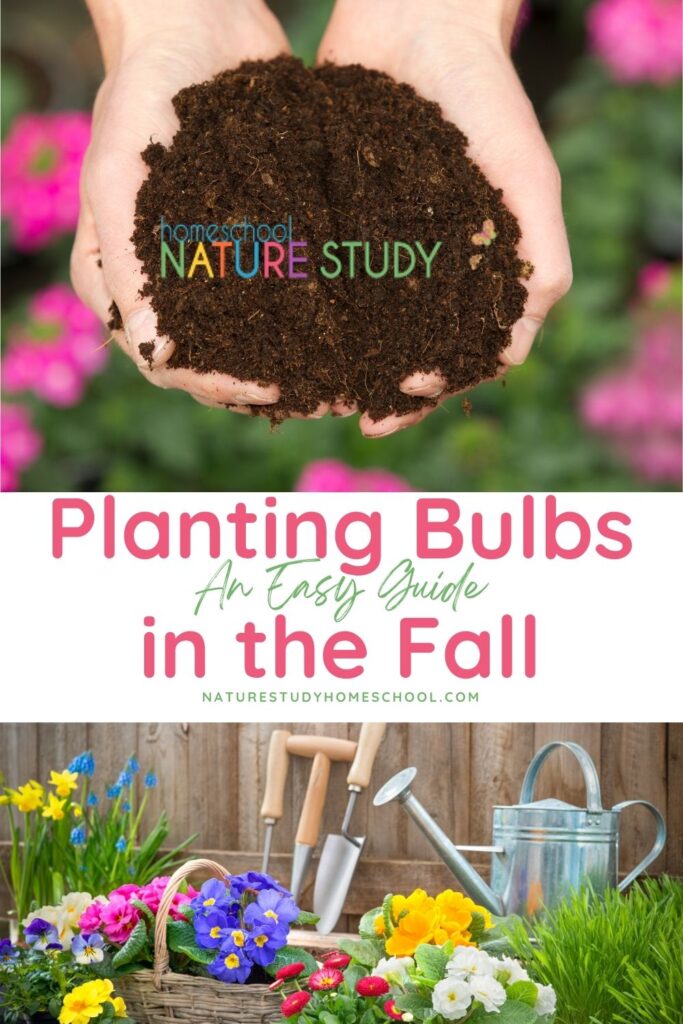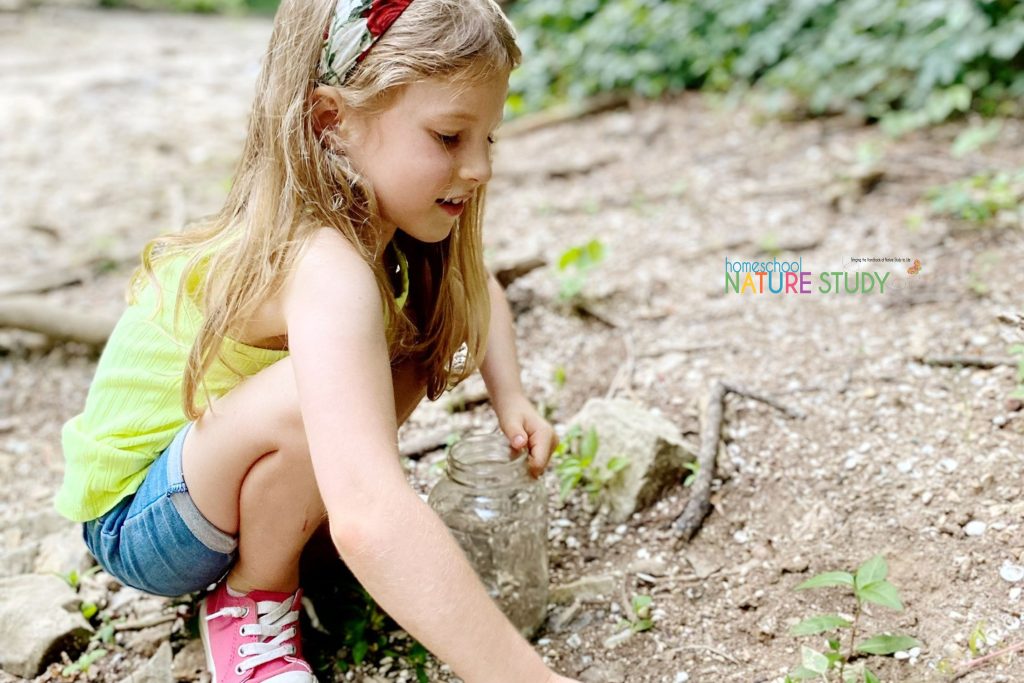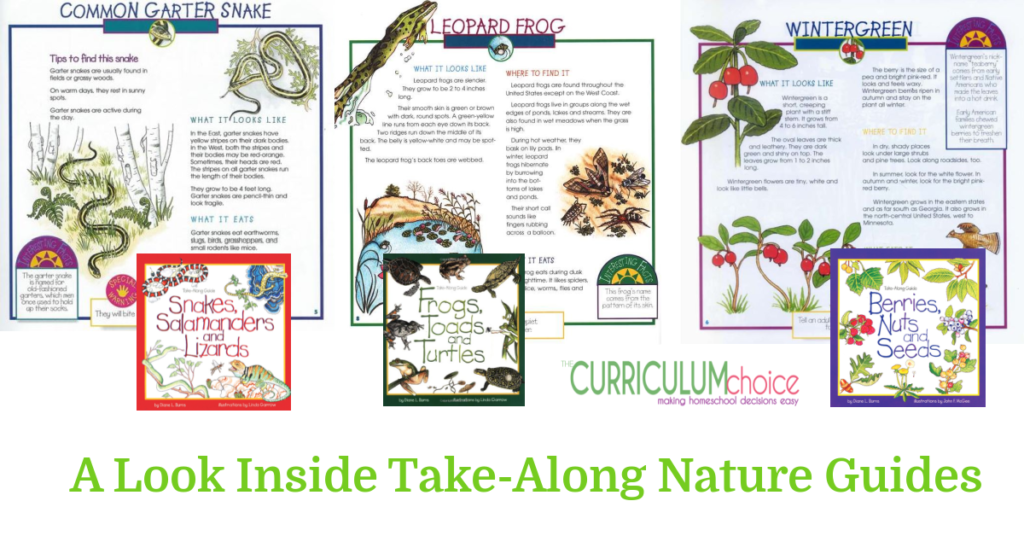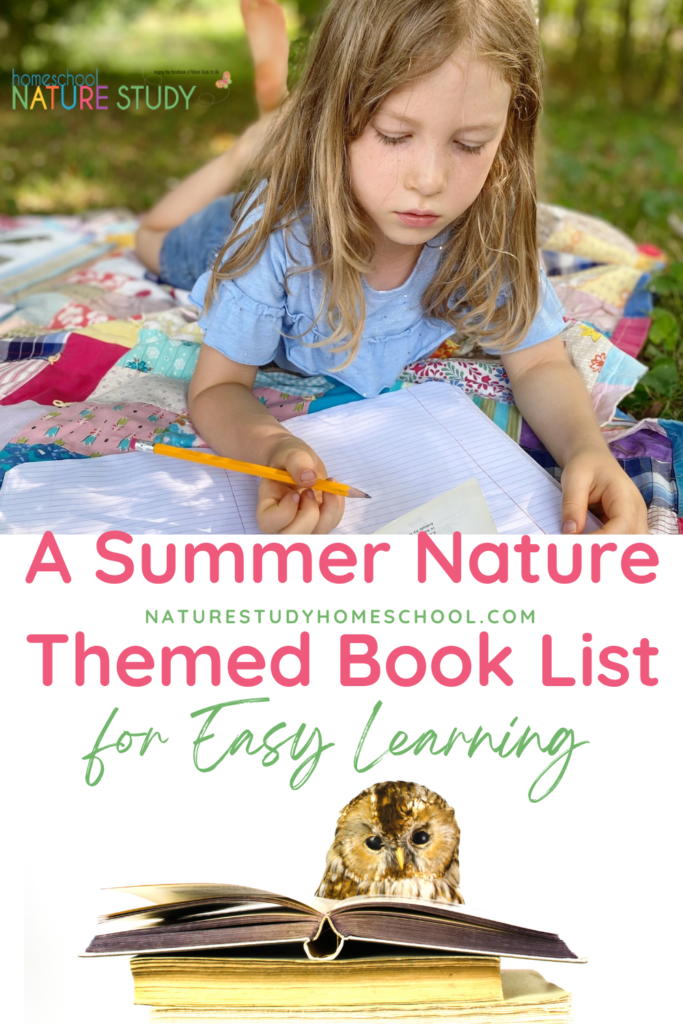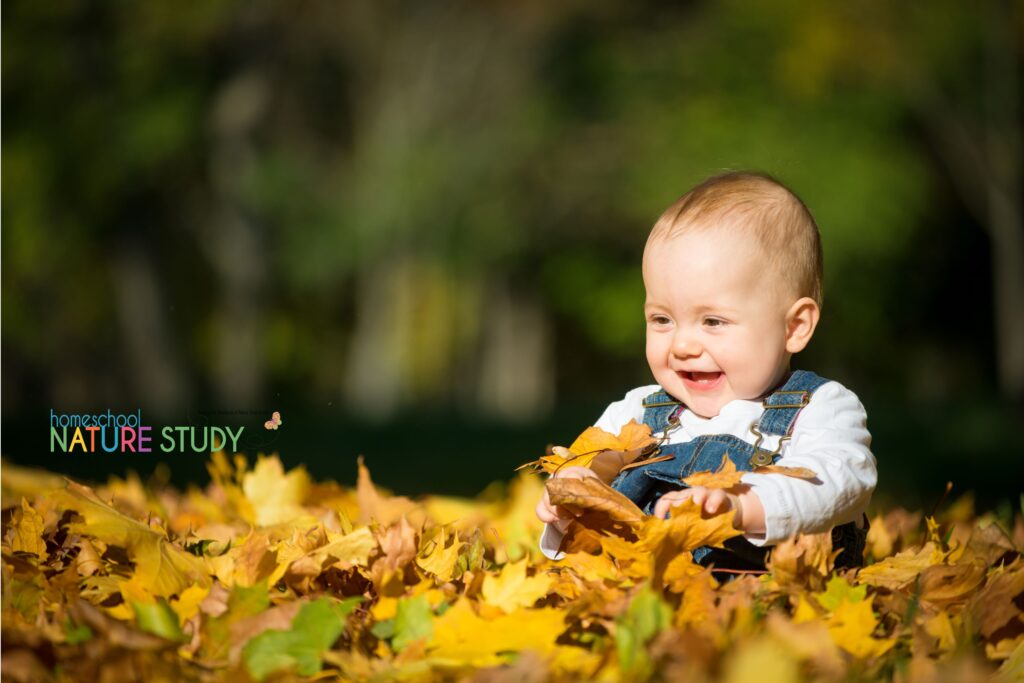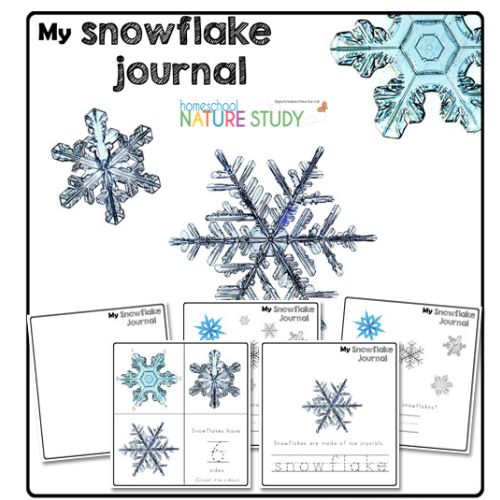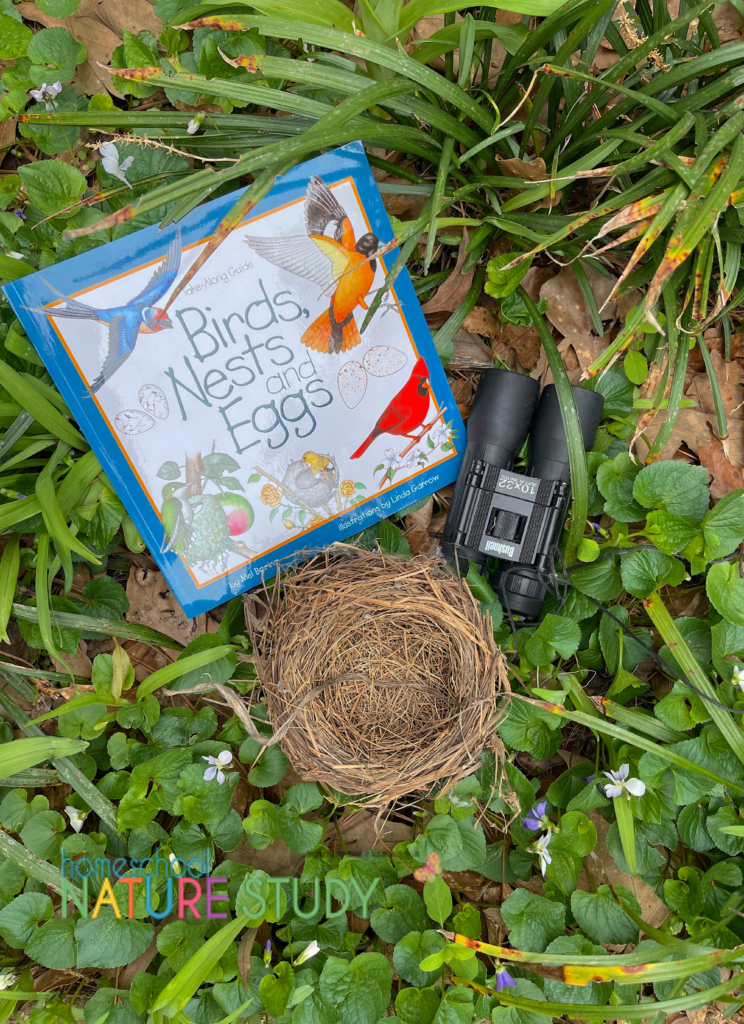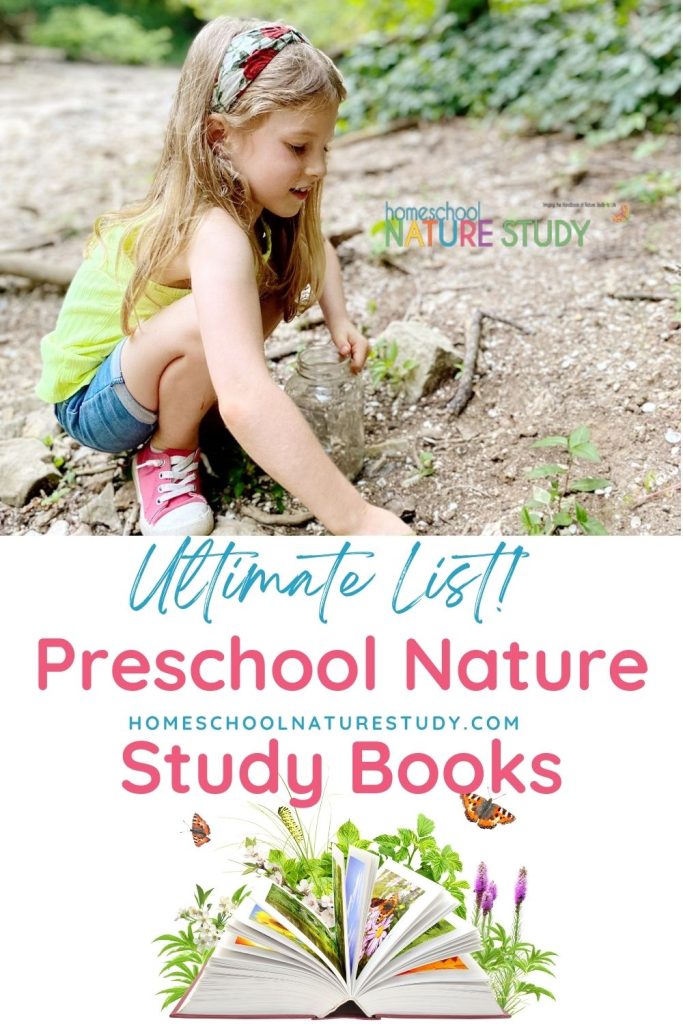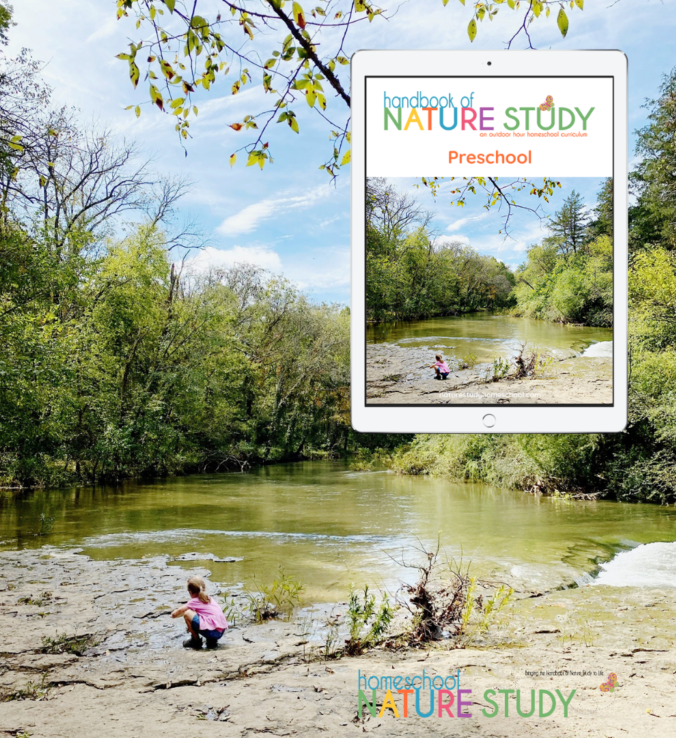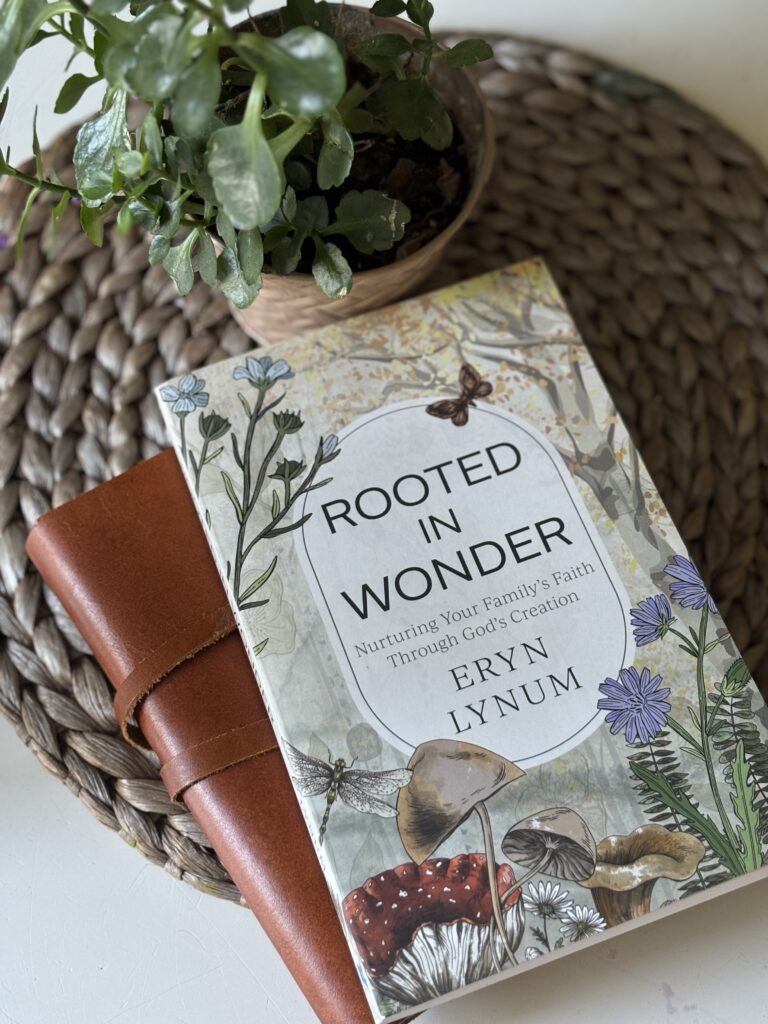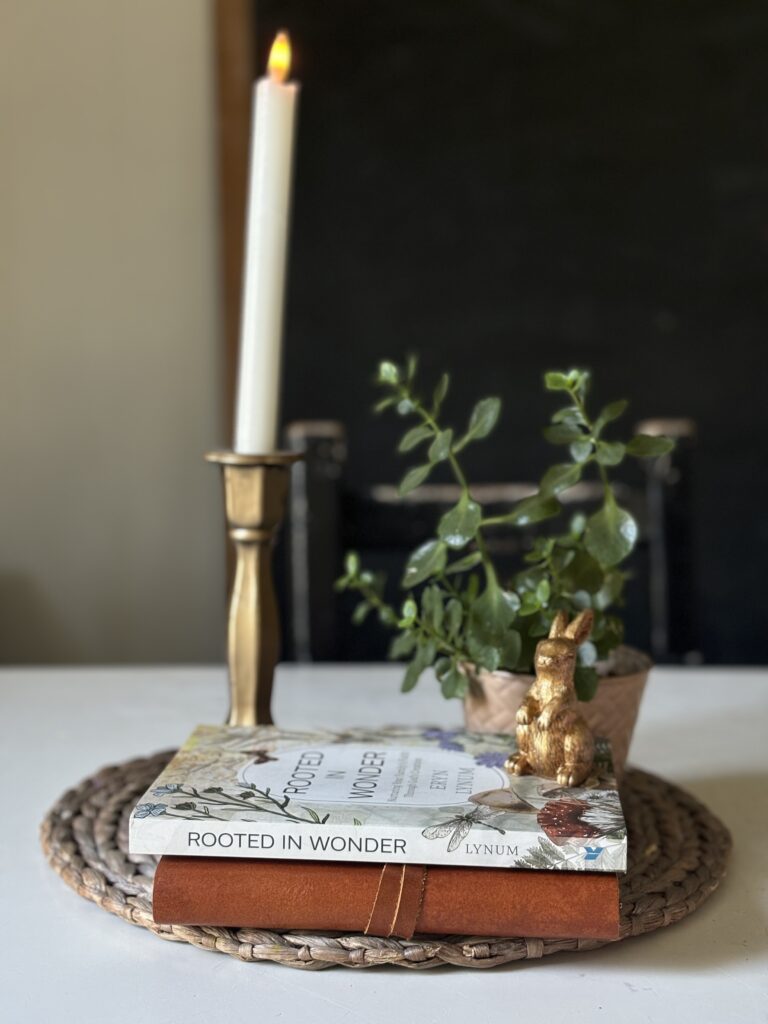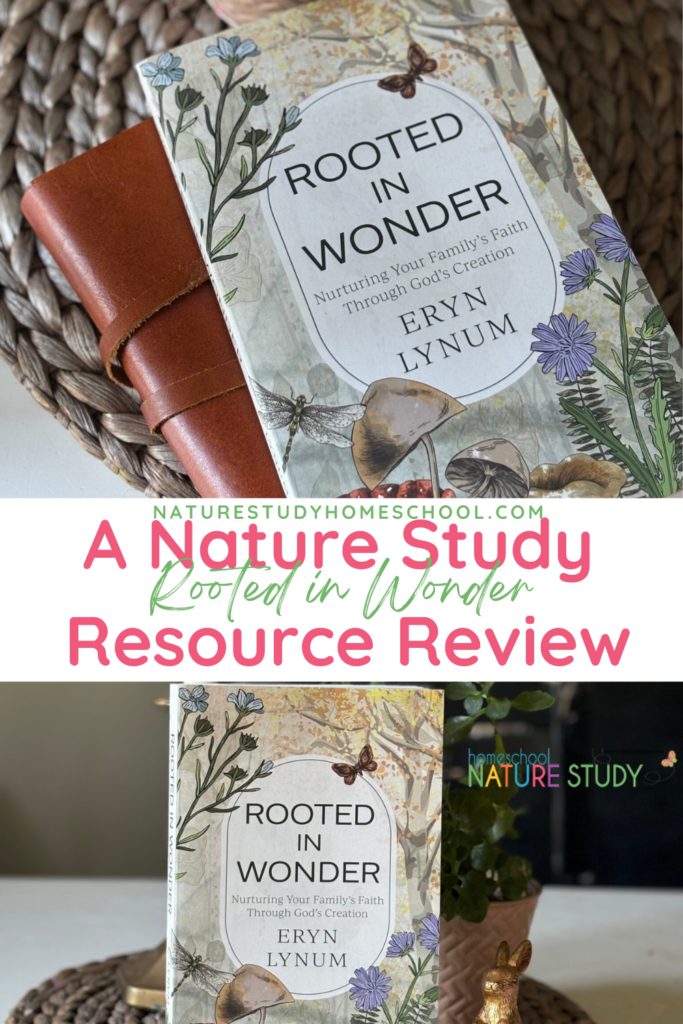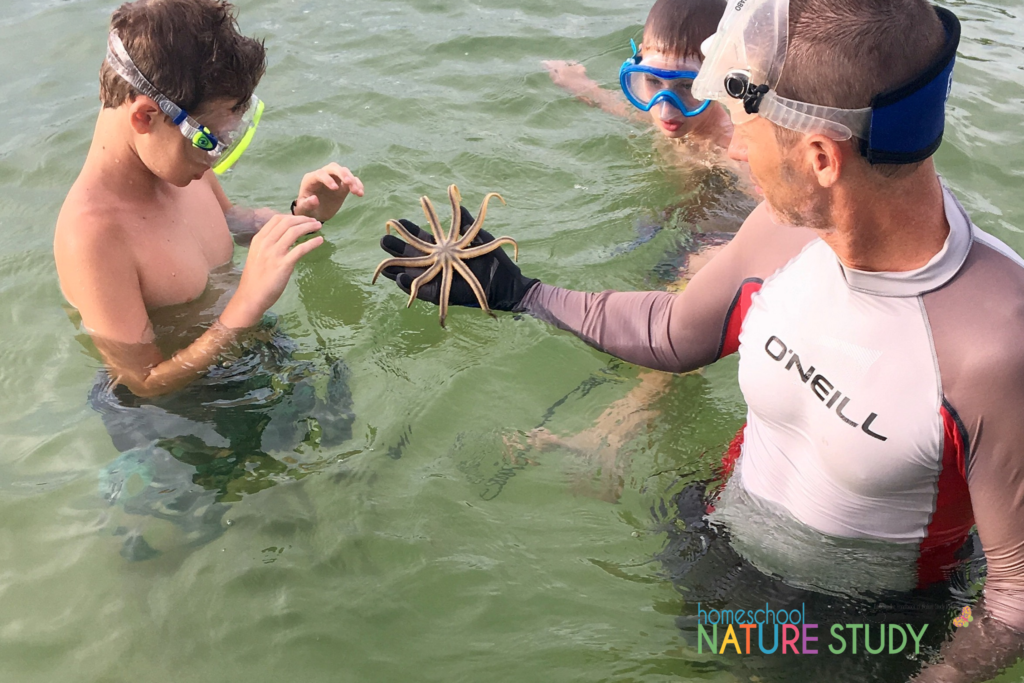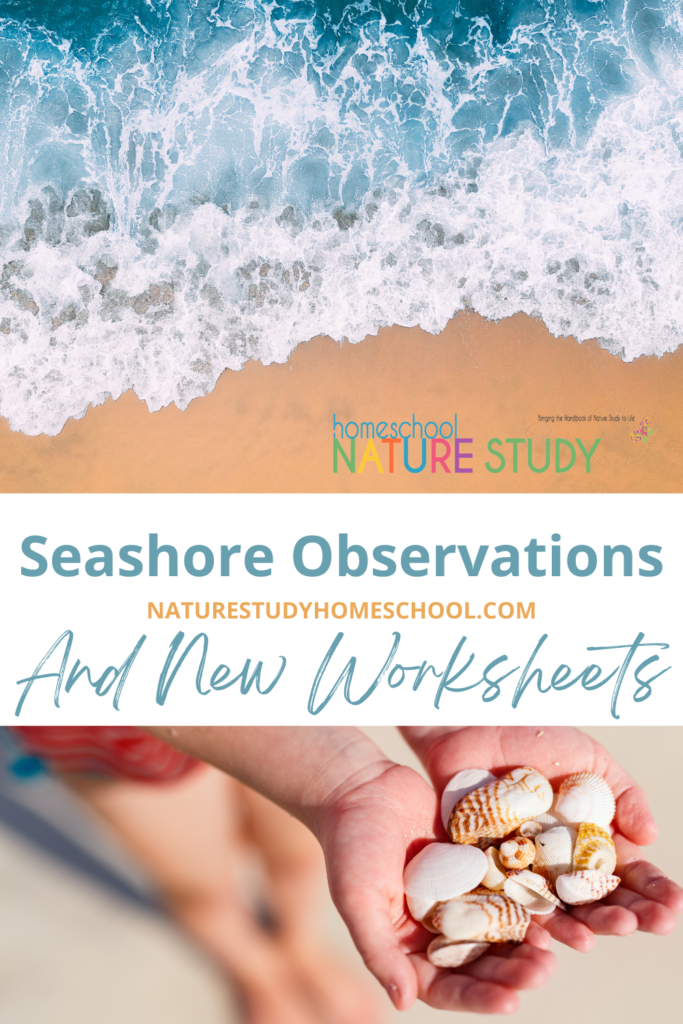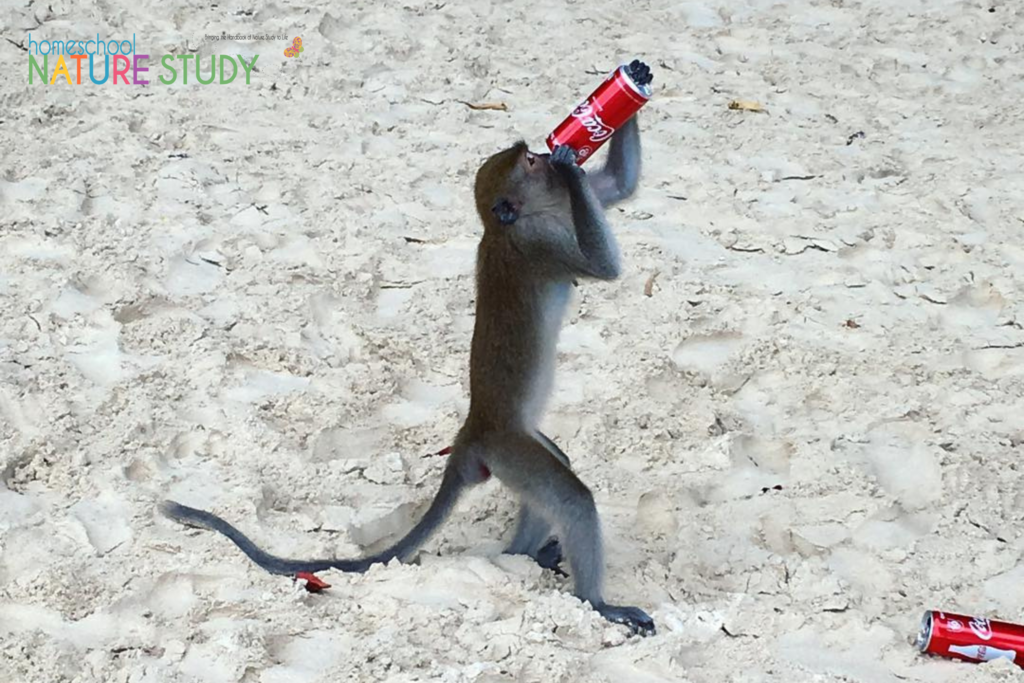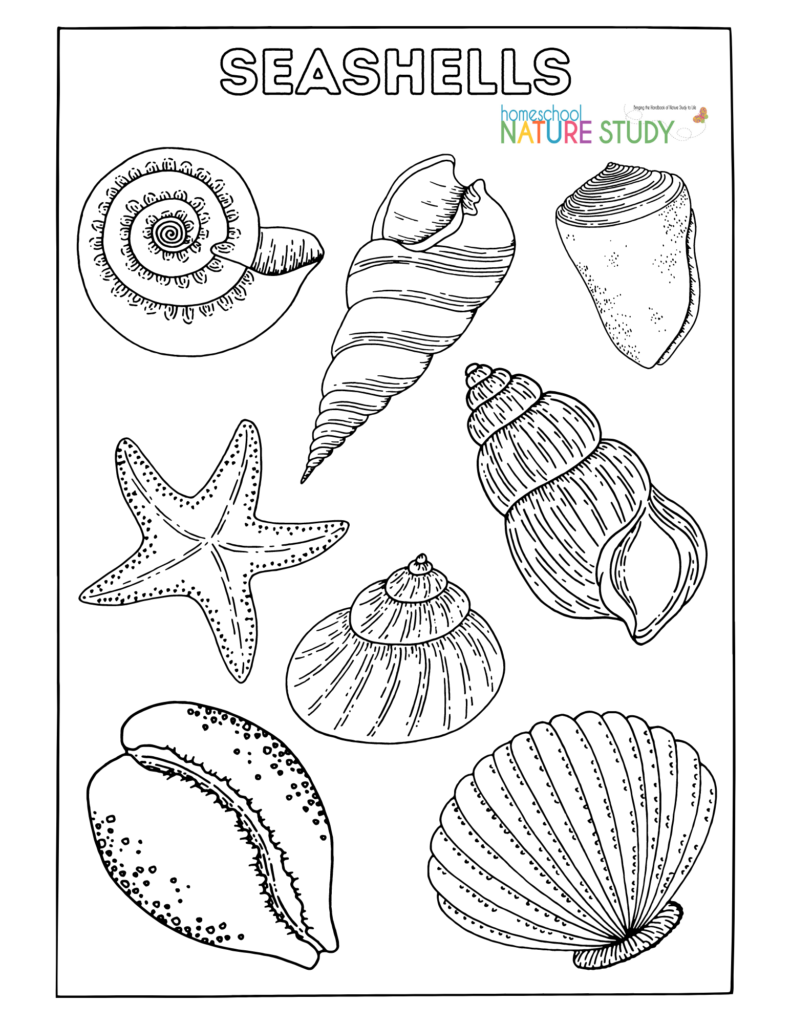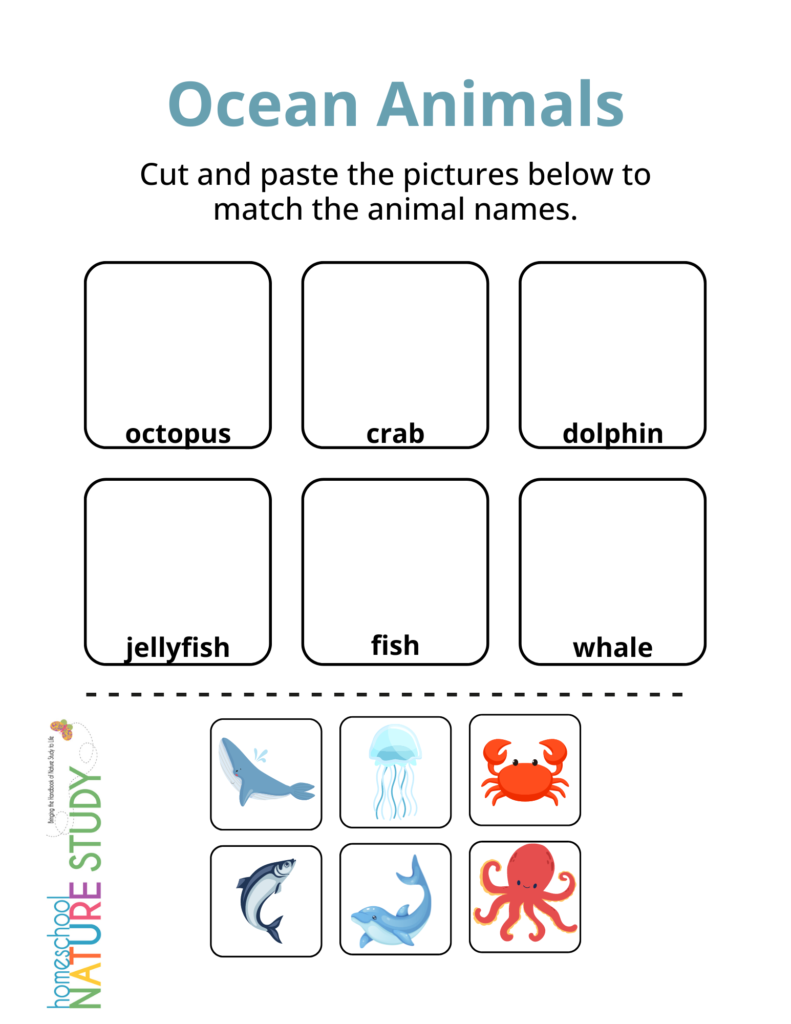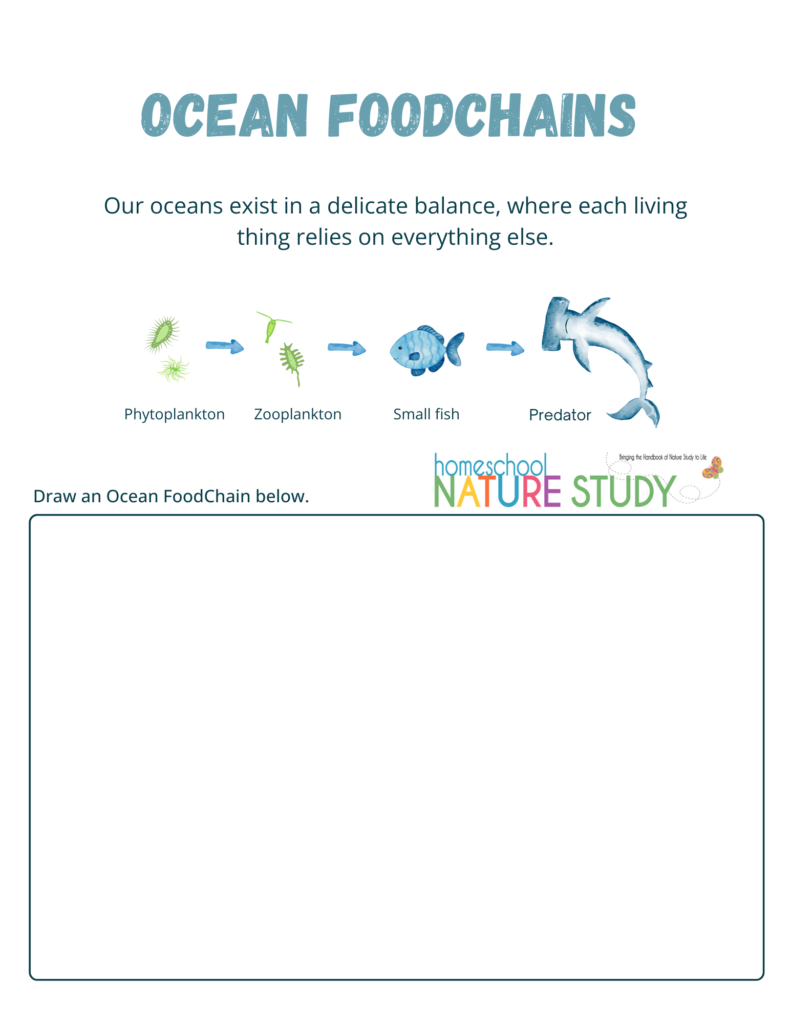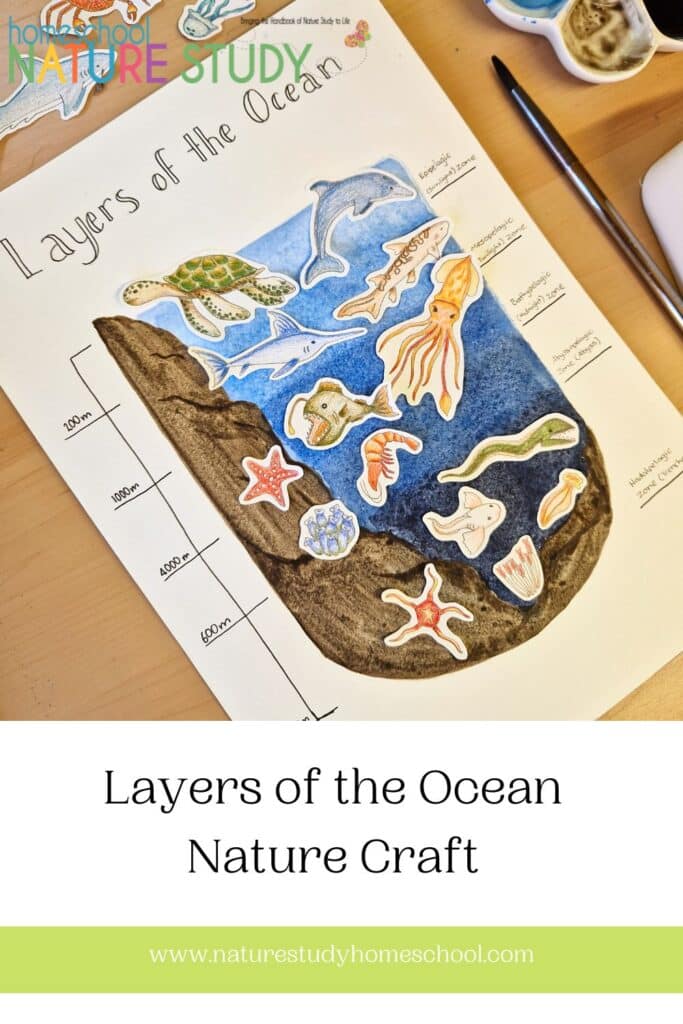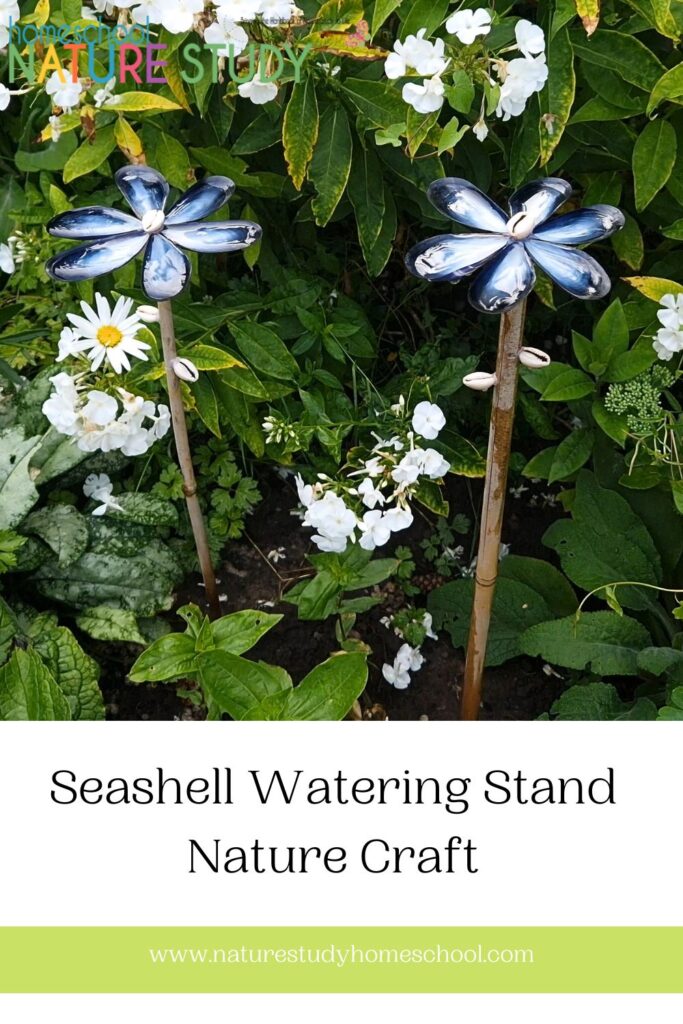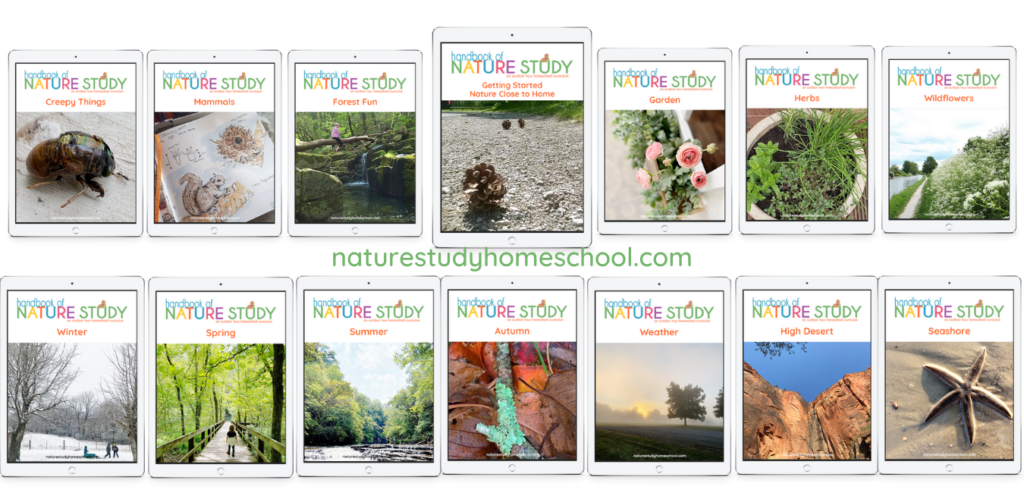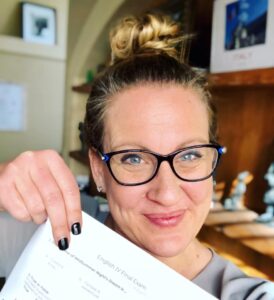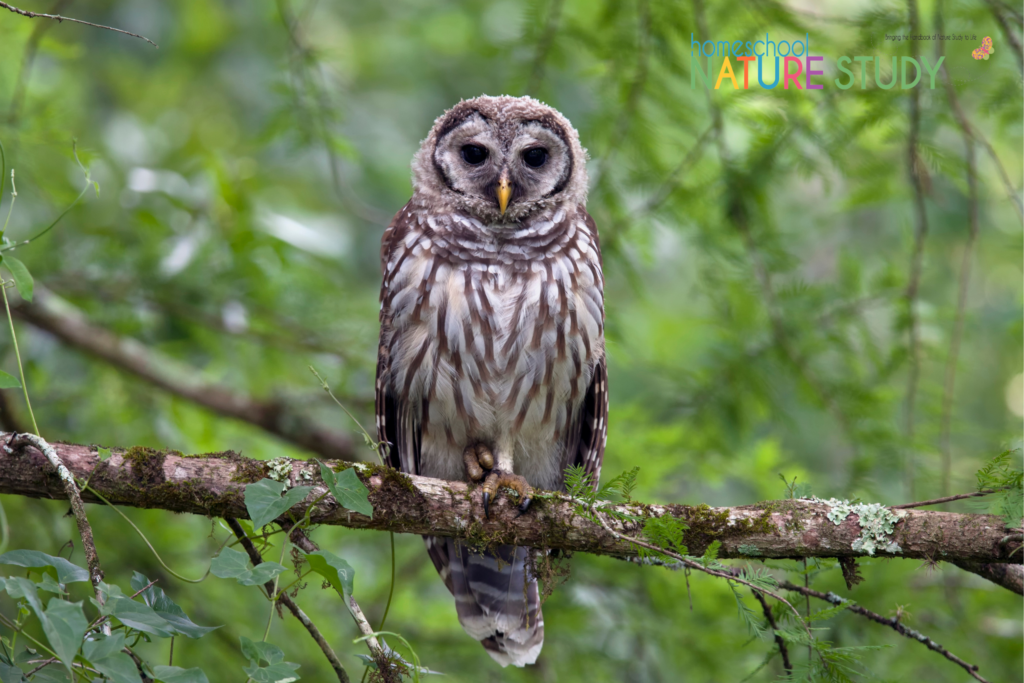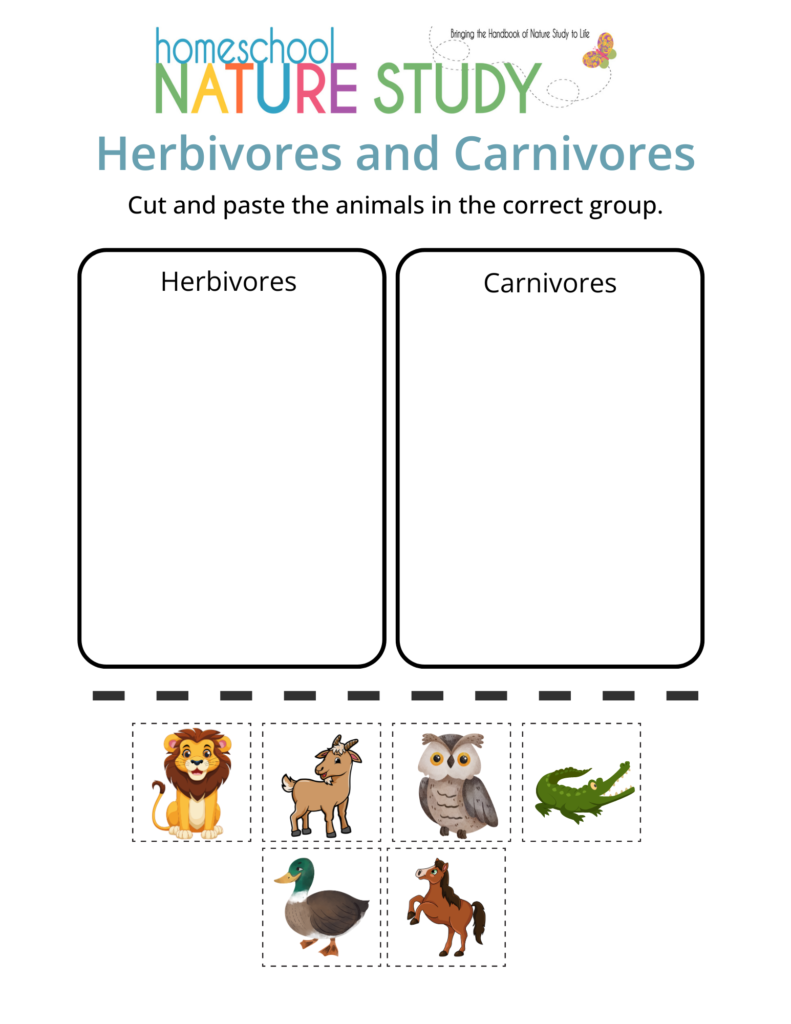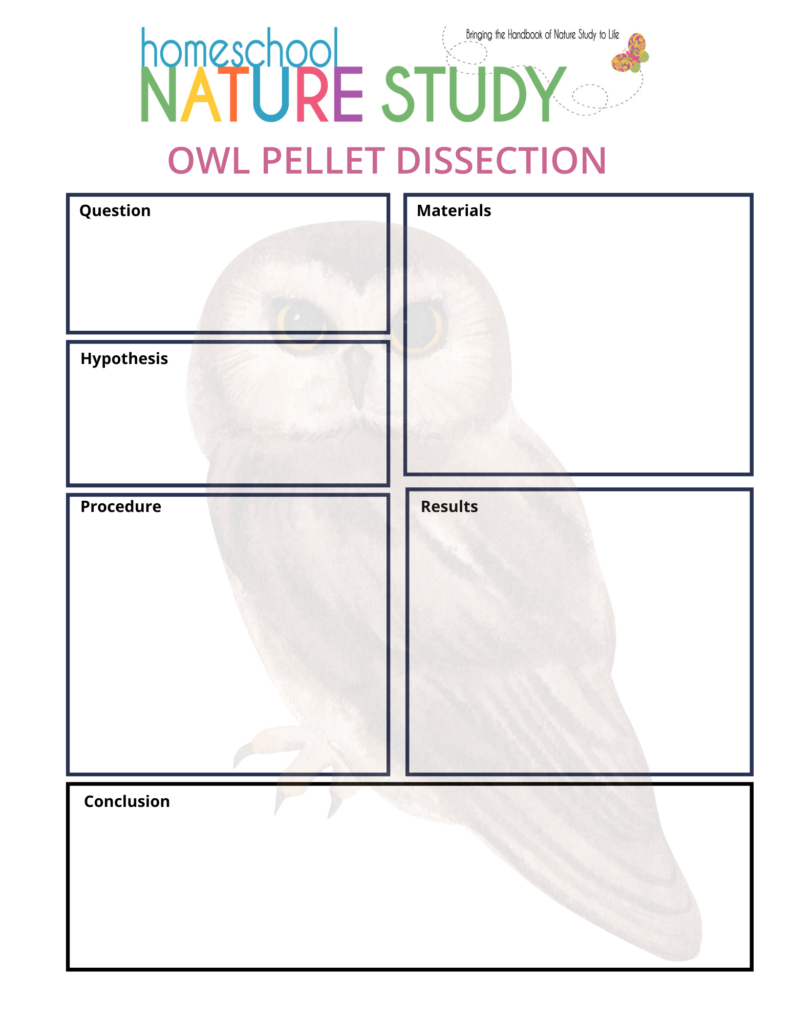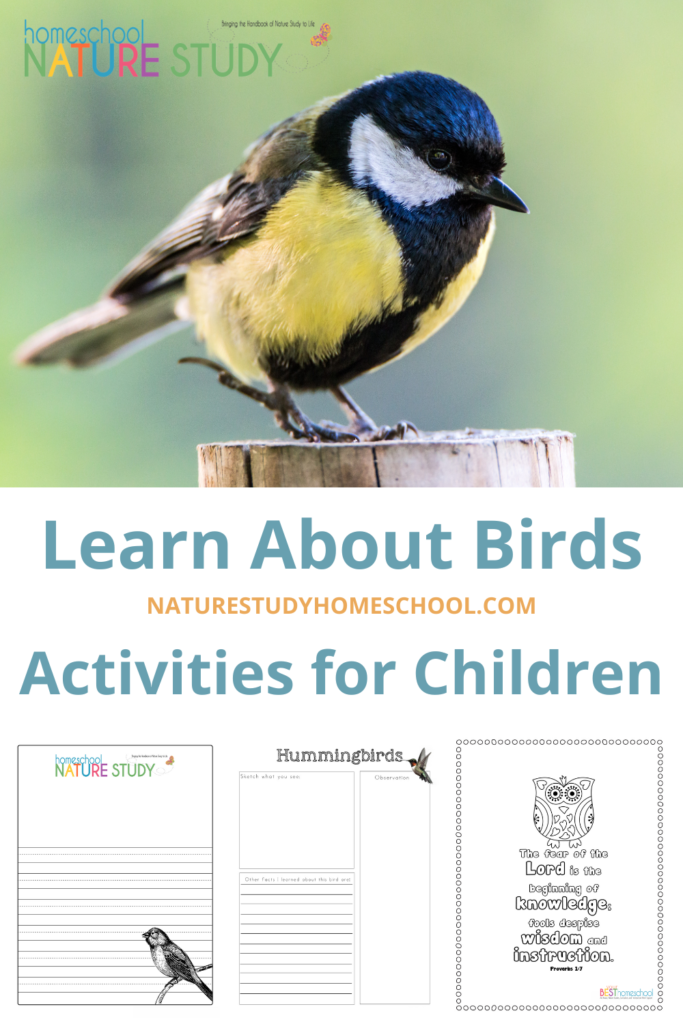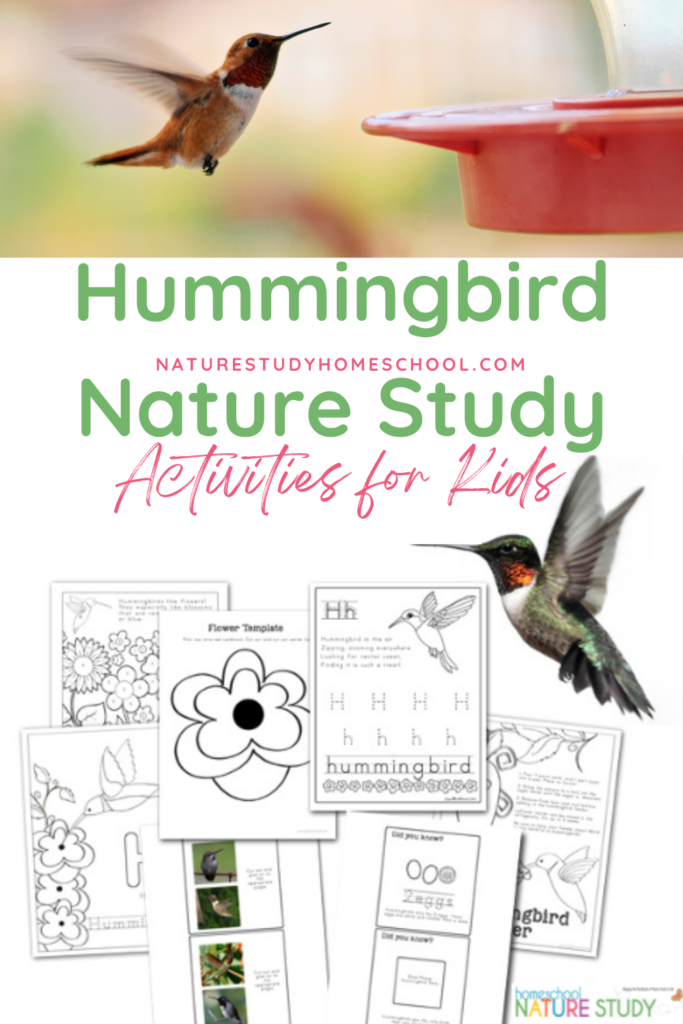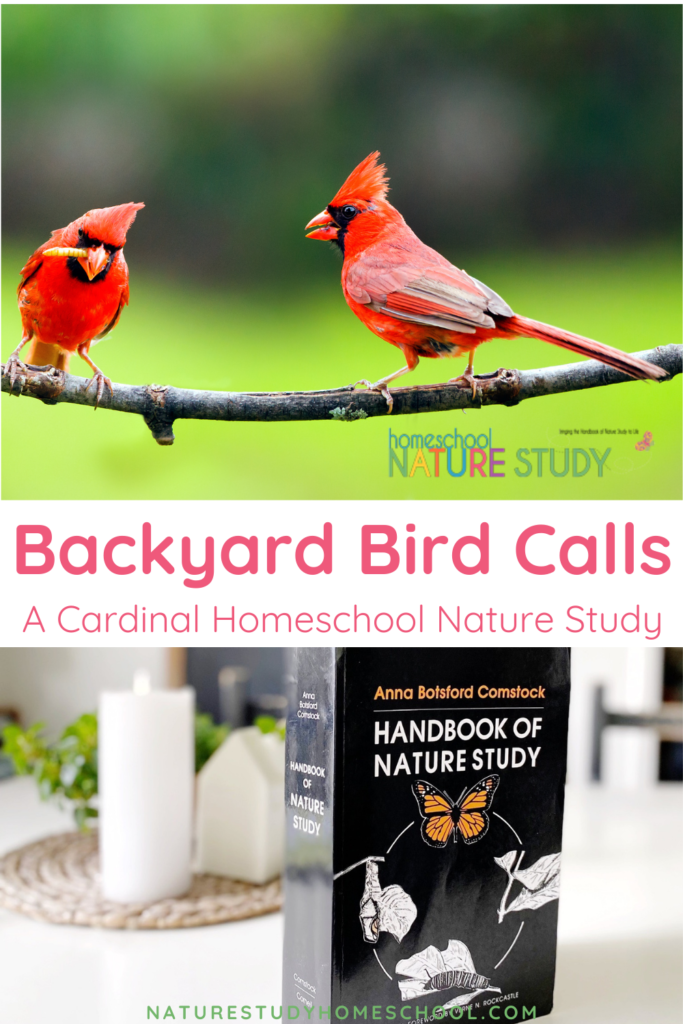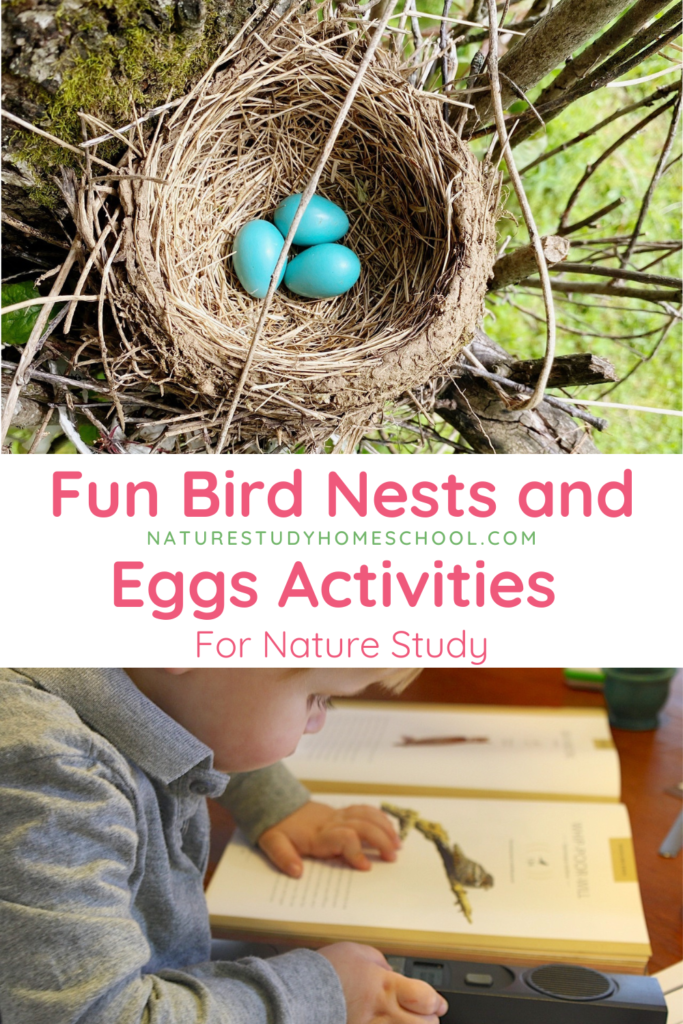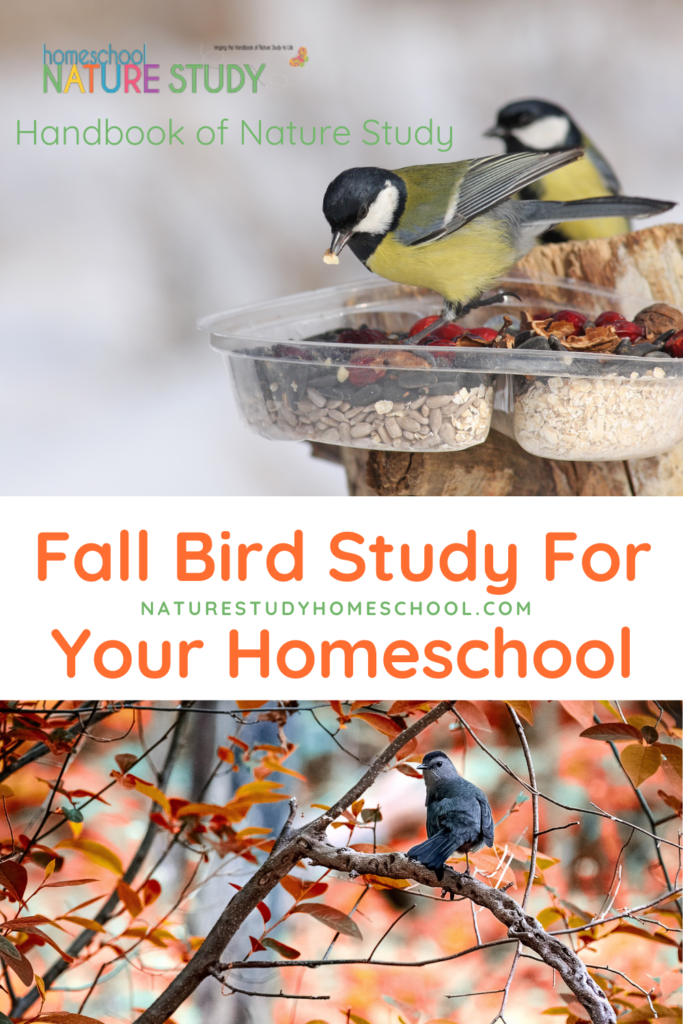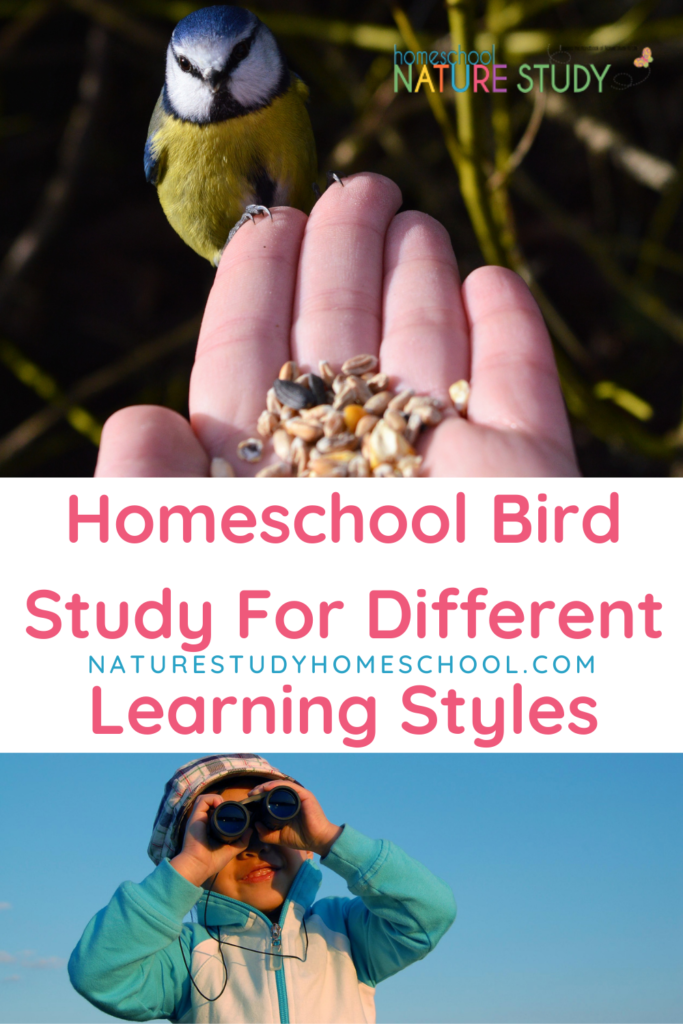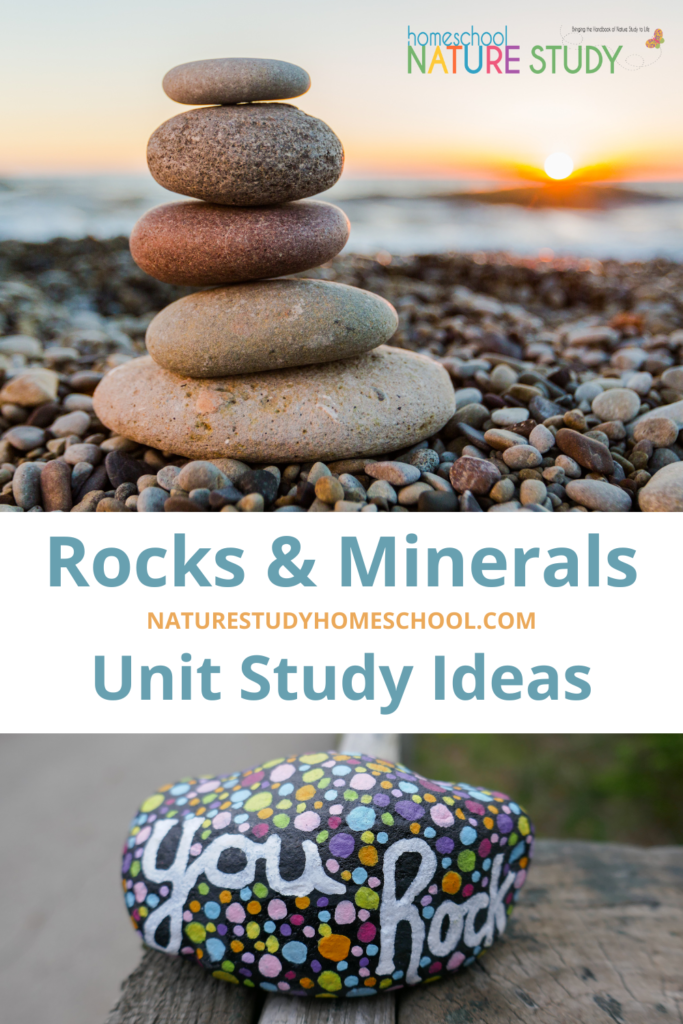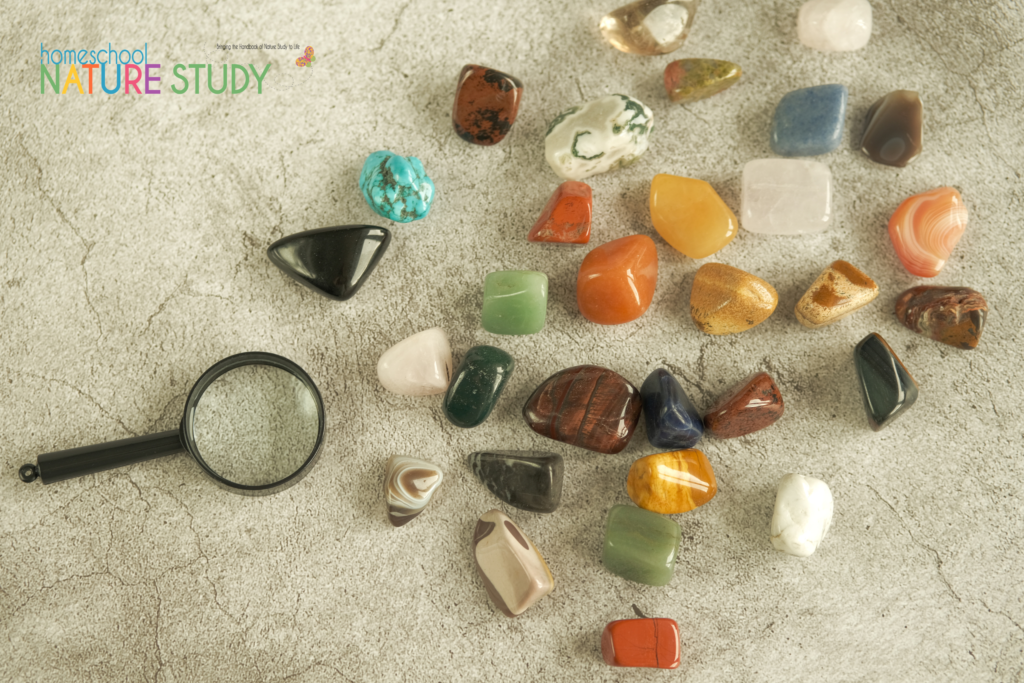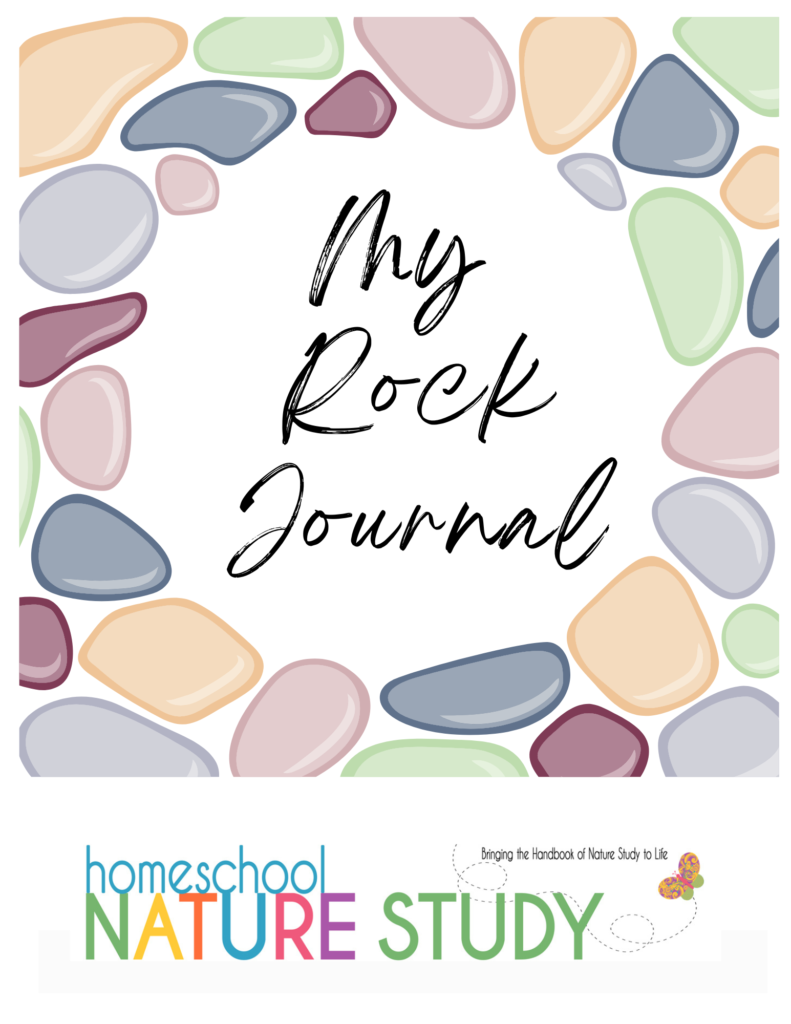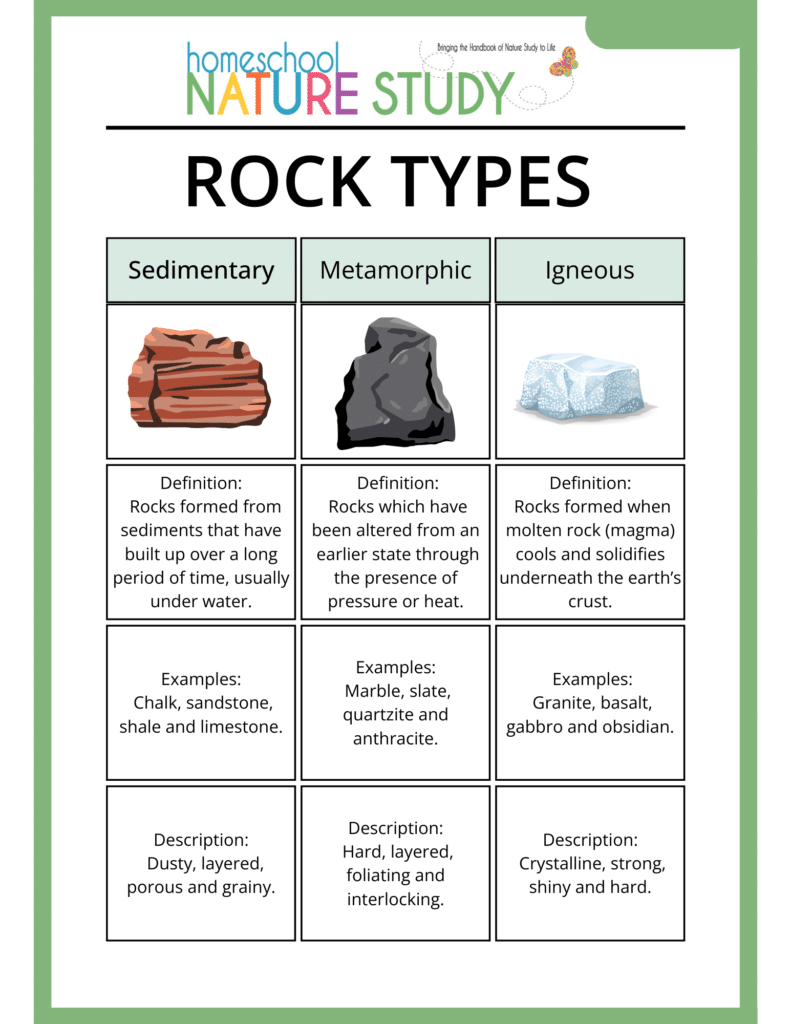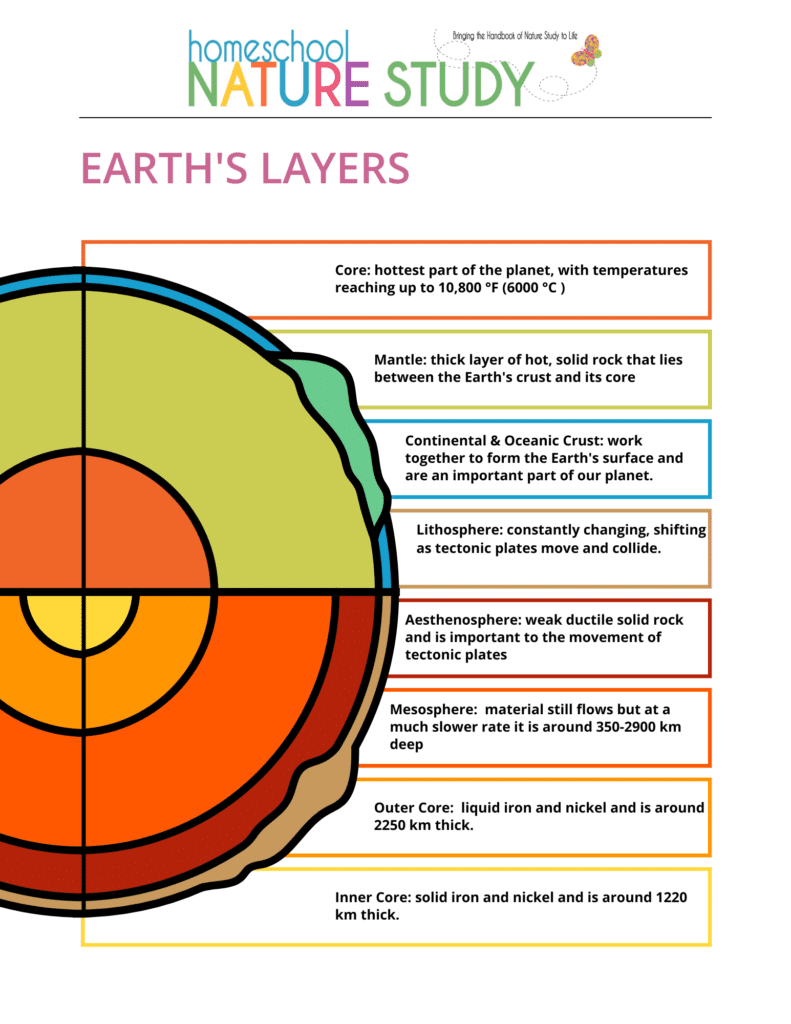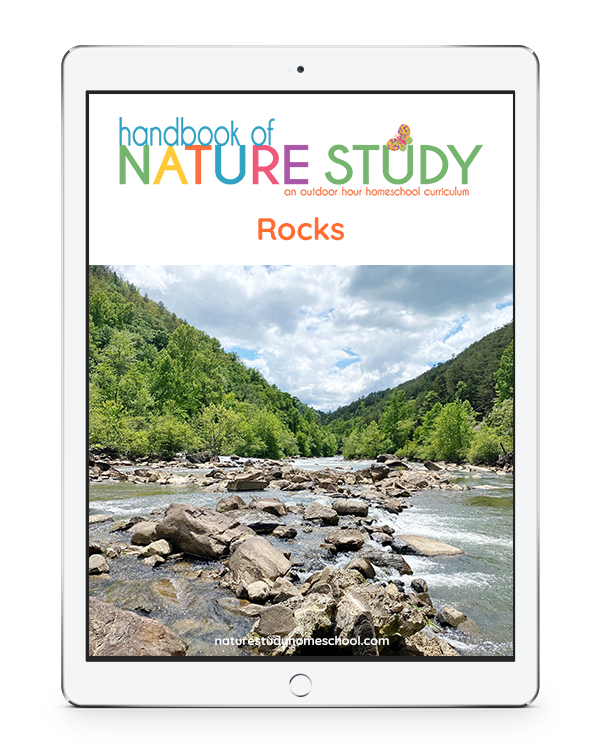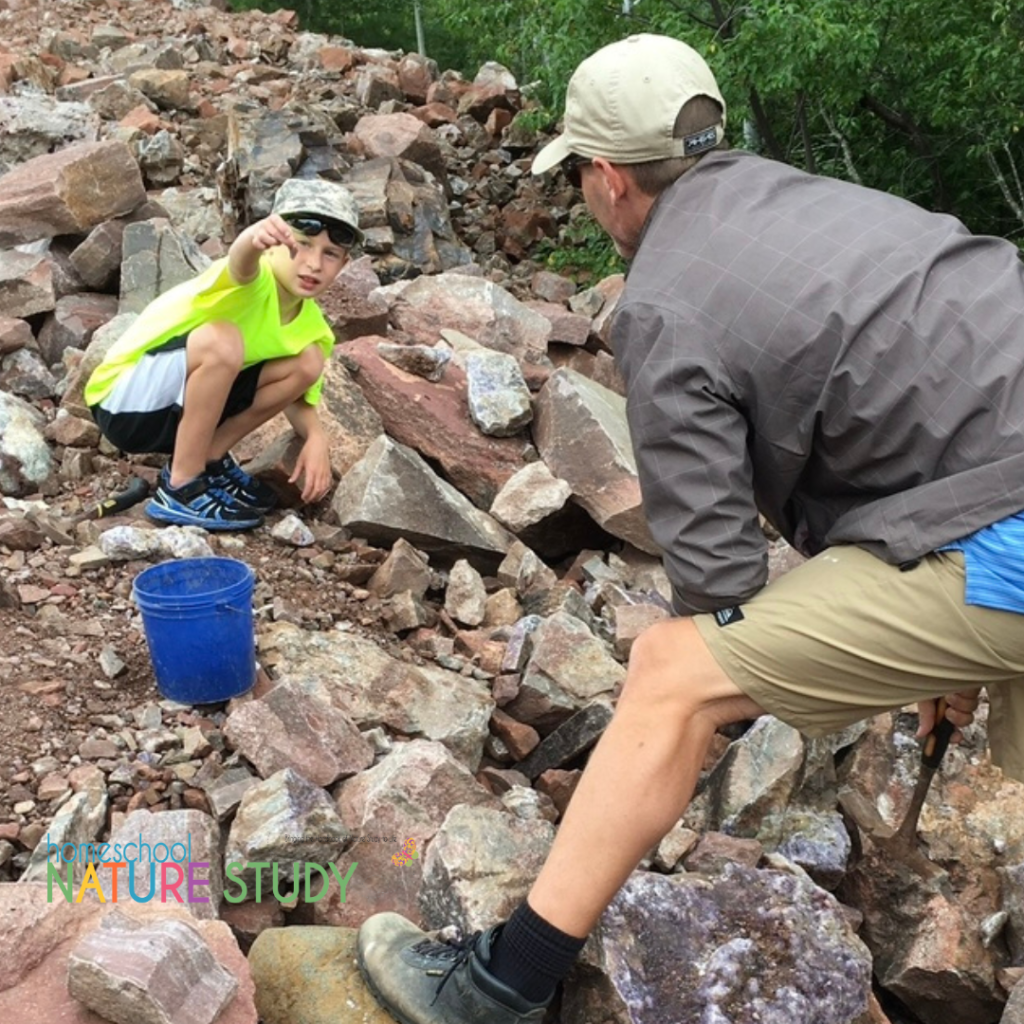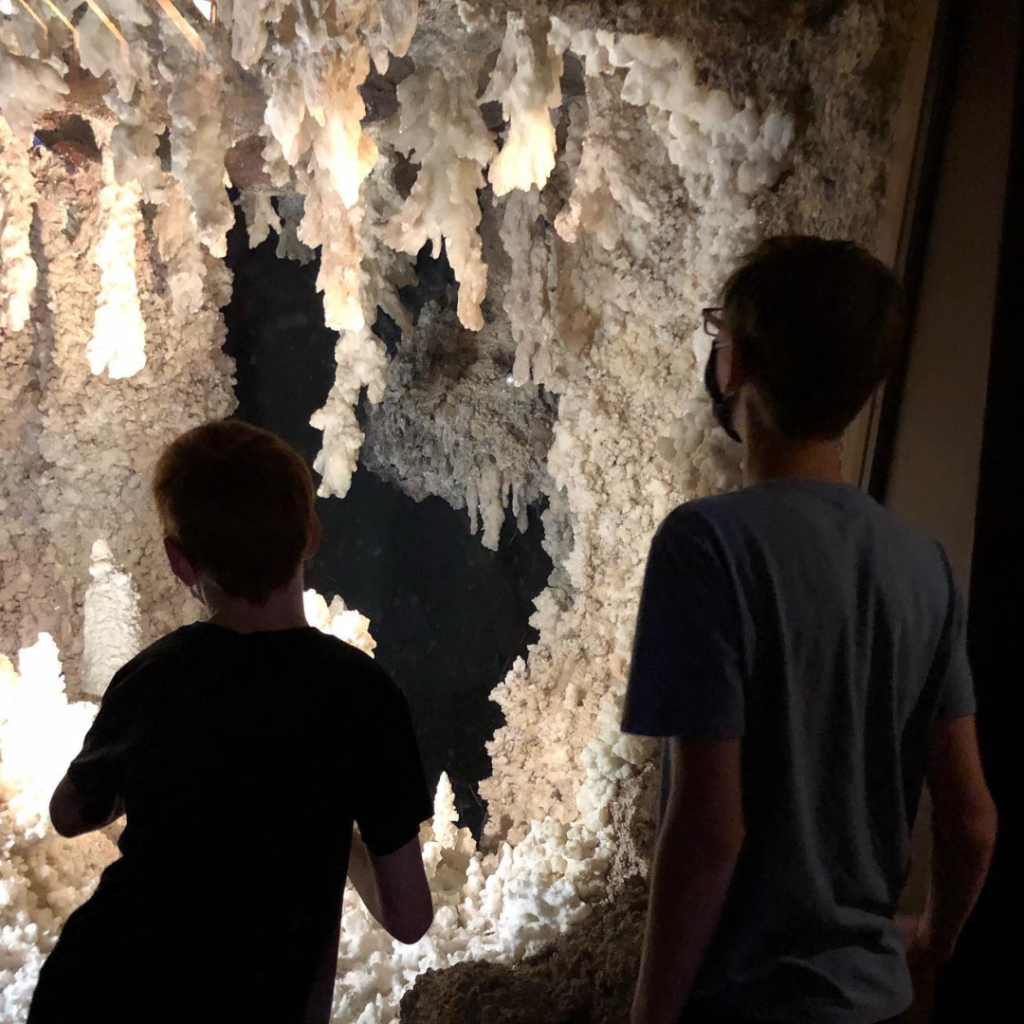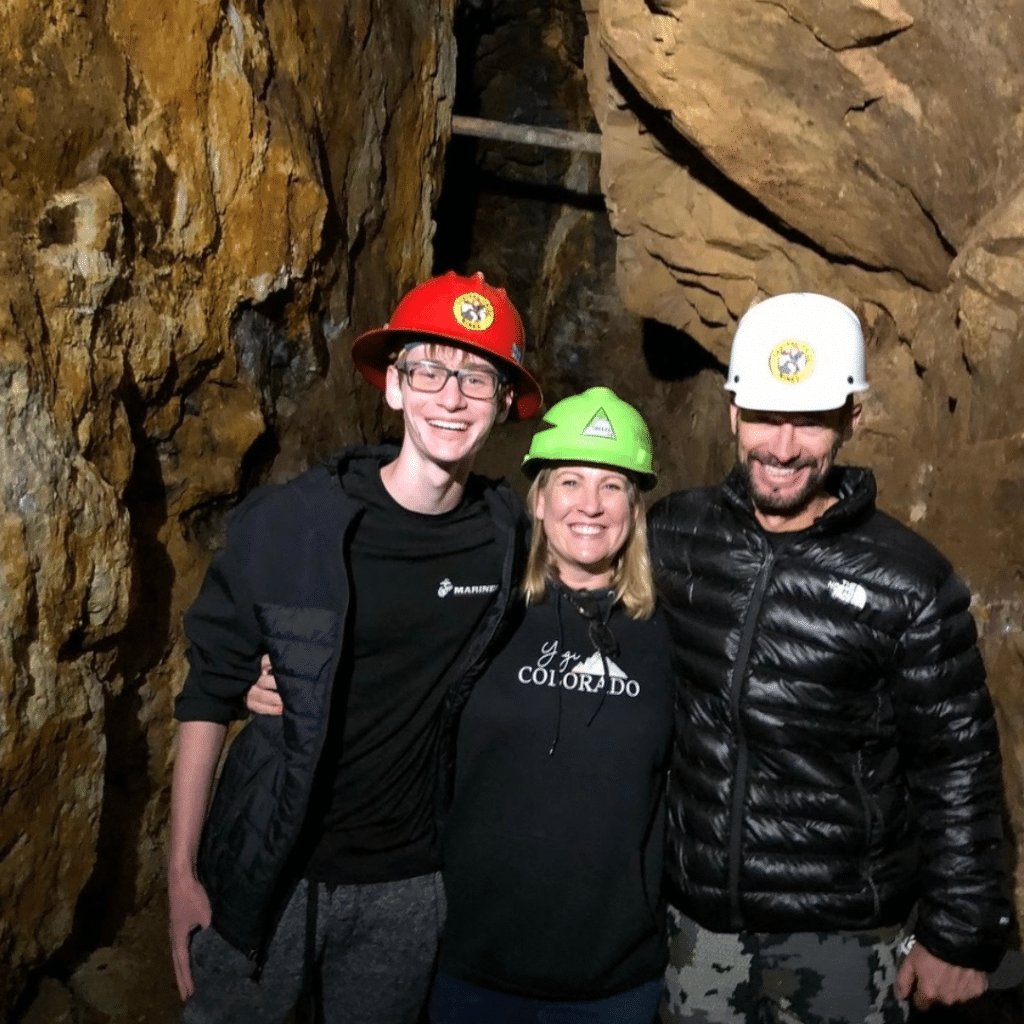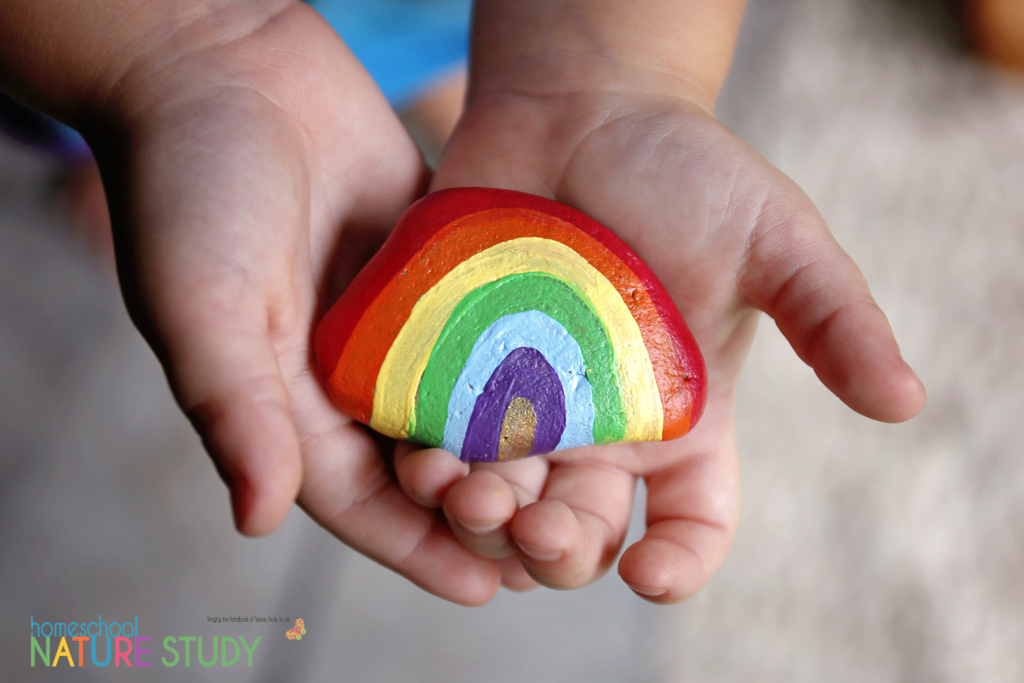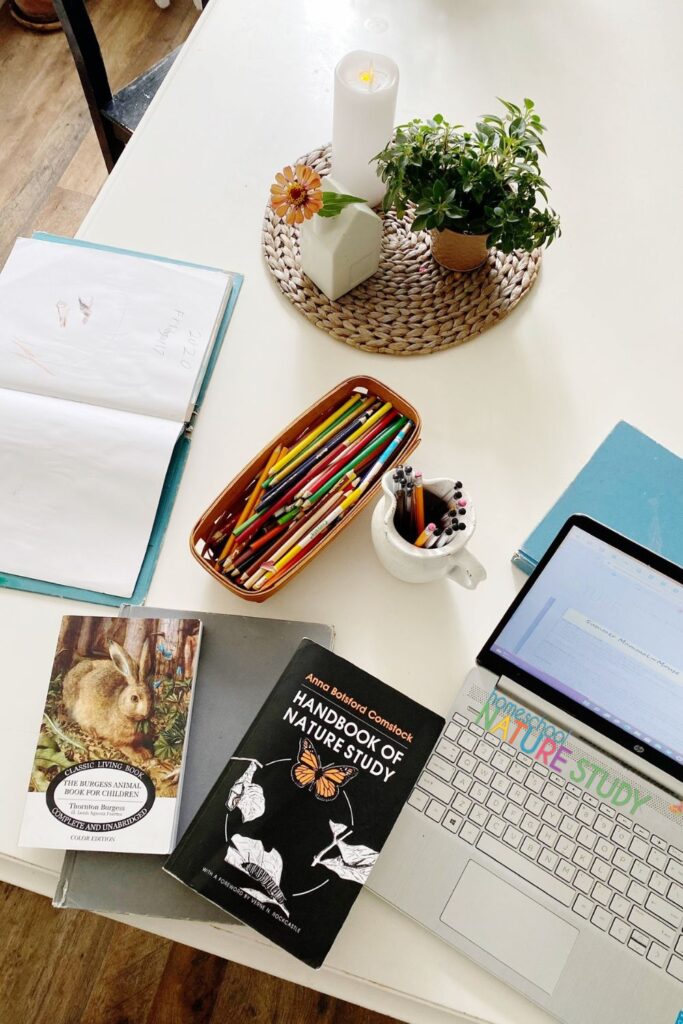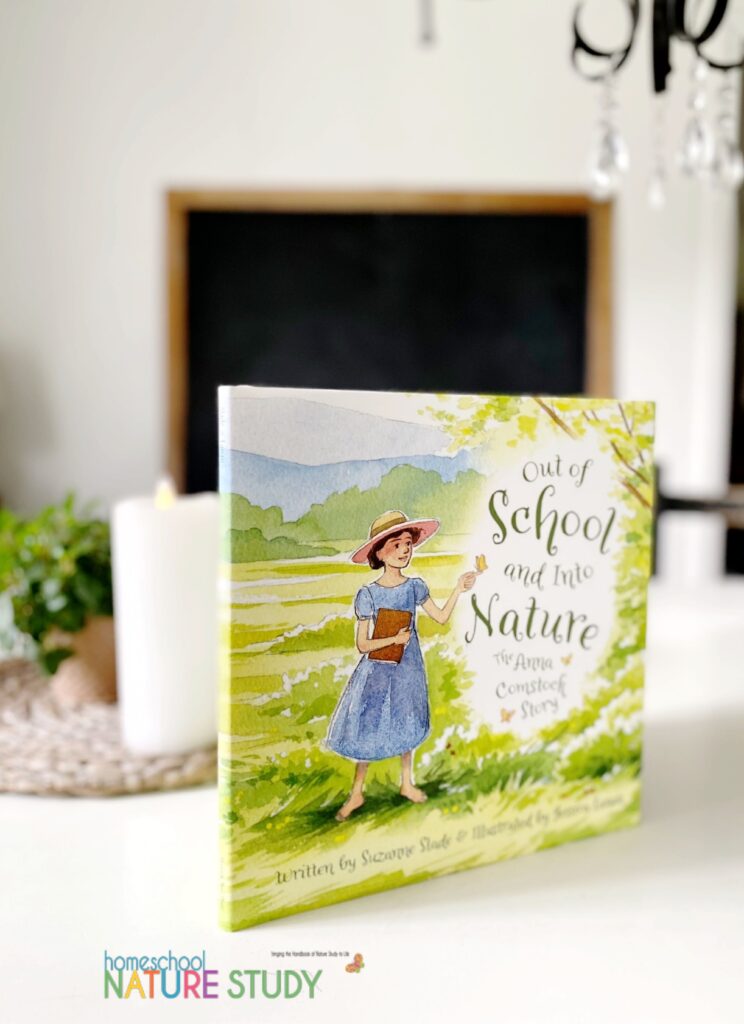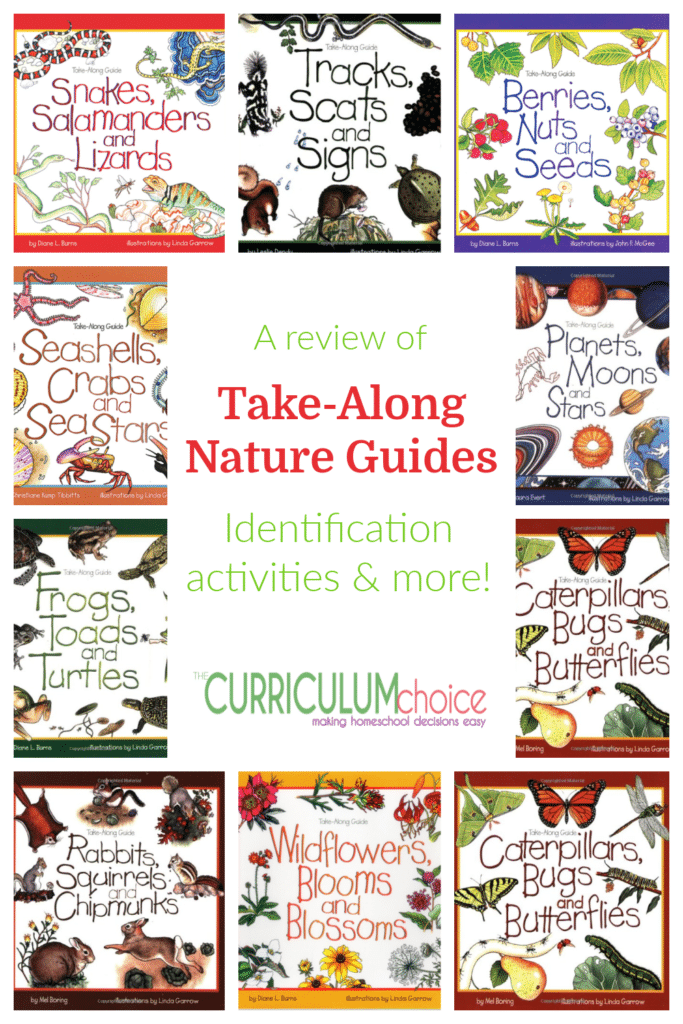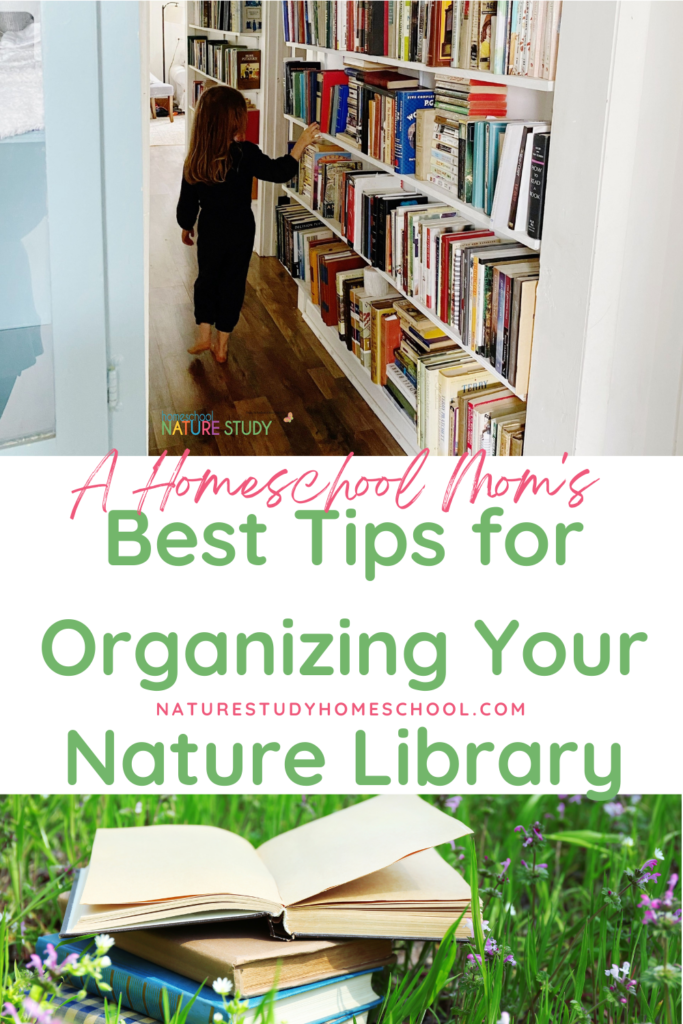When the air turns cooler and the leaves start to change color, it is always fun to learn more about apples and pumpkins! Enjoy this ultimate guide of fun apple and pumpkin nature study ideas for your homeschool.
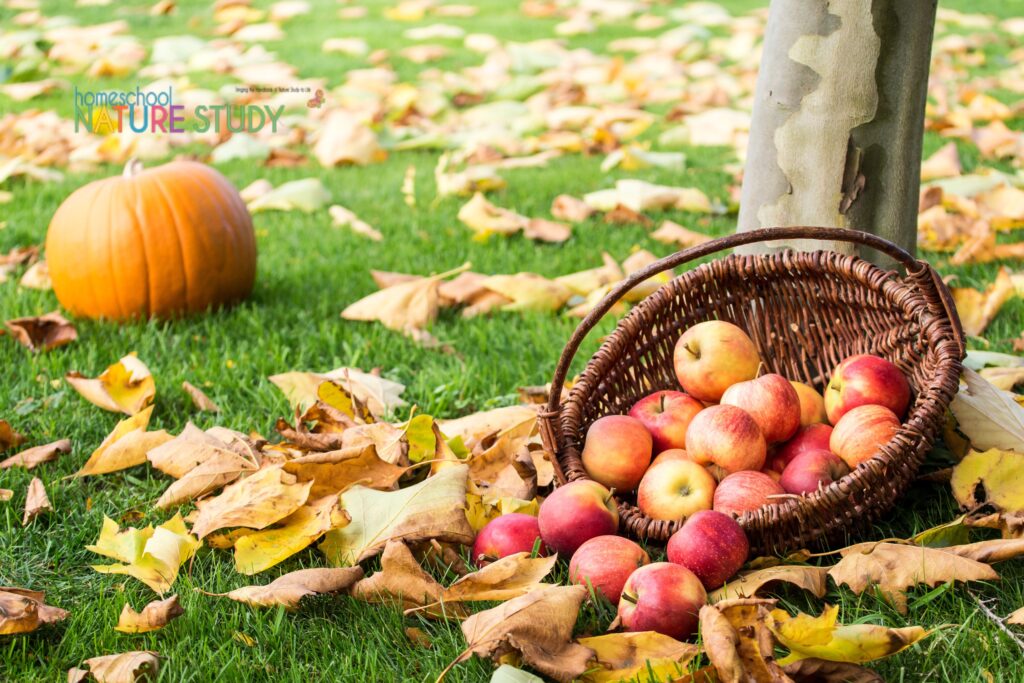
5 Apple Homeschool Nature Study Ideas
All things apple – what a fun, fall topic to learn about!
“The apple is a nutritious fruit, wholesome and easily digested. The varieties of apple differ in shape, size, color, texture, and flavor. A perfect apple has no bruise upon it and no wormholes in it. “
Handbook of Nature Study, page 669
- Compare the outside of the apples: color, size, stems, blemishes.
- Compare the skins: thickness, texture.
- Compare cut apples: core size, seeds, shape, flavor, crispness
- Visit an apple farm and view apples on trees (and sample doughnuts and apple pies!)
- Have a picnic under an apple tree!
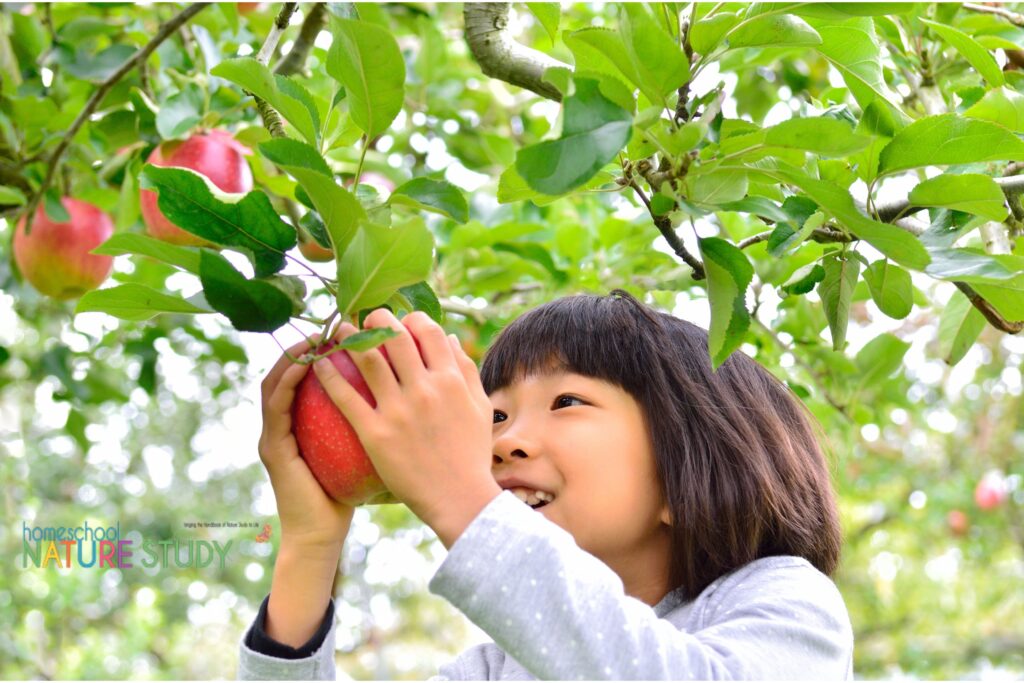
For even more ideas plus a FULL Outdoor Hour Challenge on apples, join Homeschool Nature Study membership!
More Apple Nature Study Fun
Here are a few more fun apple study ideas!
- Barb’s Apple Time – Delicious Nature Study
- Make Nana’s apple pie recipe (free recipe download)
- Apple Art Lessons Perfect for Homeschool (including How to Make an Apple Pie and See the World)
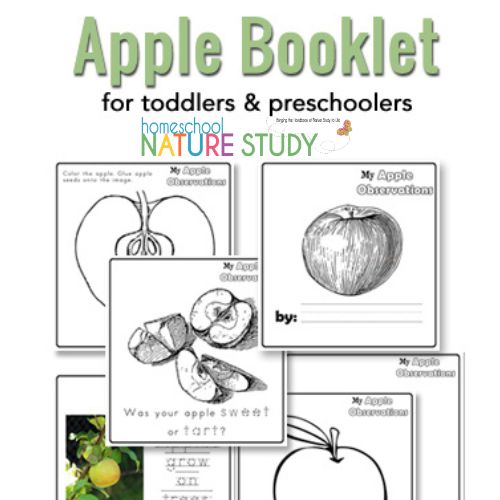

5 Pumpkin Homeschool Nature Study Ideas
Get started with your pumpkin nature study with these simple ideas:
- Sketch or describe the pumpkin leaf.
- Thump your pumpkin and describe the sound.
- Observe the creases on the outside of the pumpkin.
- Can you tell which way your pumpkin sat on the ground when it was growing?
- Cut your pumpkin open and view the seeds. Sketch the arrangement in your journal.
More Pumpkin Nature Studies Perfect for Homeschool
For 10 more ideas plus a FULL Outdoor Hour Challenge on Pumpkins, a Pumpkin Farm Notebook page and more, join Homeschool Nature Study membership!
- See Barb’s Pumpkin Outdoor Hour Time, here.
- Tricia’s Entertaining Pumpkin Activities Your Child Will Love!

Favorite Pumpkin Recipes to Enjoy
Handbook of Nature Study website founder Barb McCoy shares these favorites!
- Pumpkin Bread – no raisins, whole wheat flour
- Pumpkin Chocolate Chip Bars – new recipe that is going to be a favorite
- Pecan Pumpkin Surprise – we use this recipe and add 1/2 cup pecans
- Pumpkin Pancake –we don’t use allspice and we top with butter and a little powdered sugar instead of syrup
Tricia’s Easy Pumpkin Recipes:
- Grandma’s Pumpkin Raisin Cookies
- Pumpkin Chocolate Chip Cookies
- Easy Chocolate Chocolate Chip Pumpkin Muffins
- Easy Gluten Free Pumpkin Muffins Recipe – just two ingredients!
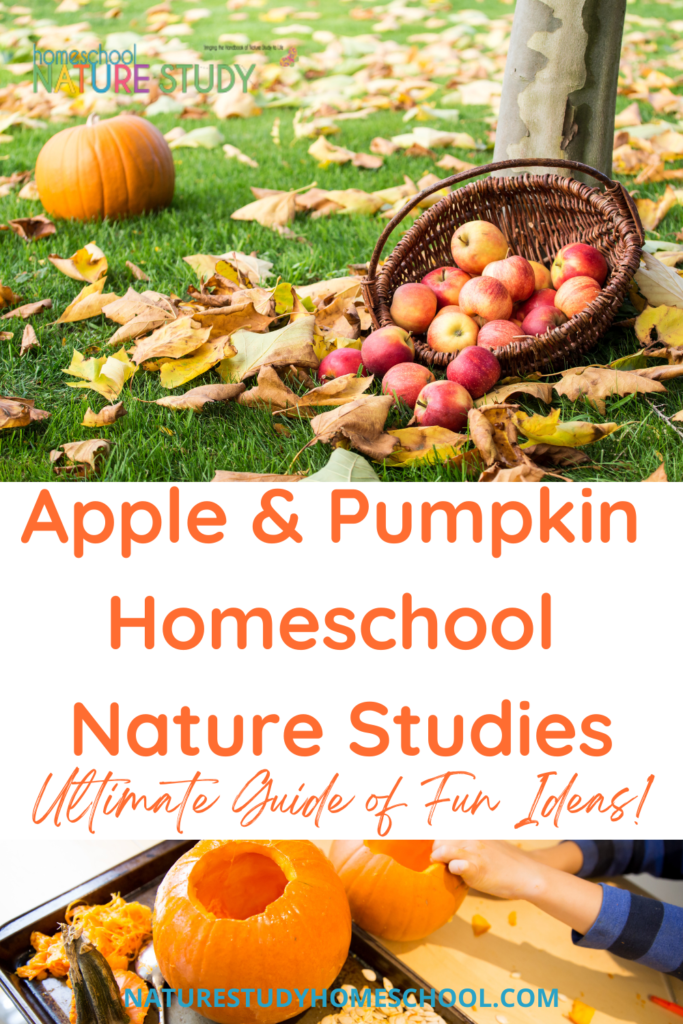
More Fall Homeschool Nature Study Fun!
Keep the apple and pumpkin nature study fun going with these resources for all ages:
- Homeschool Fall Leaf Study and Activities Perfect for All Ages
- Bats Homeschool Nature Study: Mammals
- The Ultimate Guide to Fall Nature Study in Your Own Backyard
- The Fall Homeschool at The Curriculum Choice

Tricia and her family fell in love with the Handbook of Nature Study and the accompanying Outdoor Hour Challenges early in their homeschooling. The simplicity and ease of the weekly outdoor hour challenges brought joy to their homeschool and opened their eyes to the world right out their own back door! She shares the art and heart of homeschooling at You ARE an ARTiST and Your Best Homeschool plus her favorite curricula at The Curriculum Choice.

